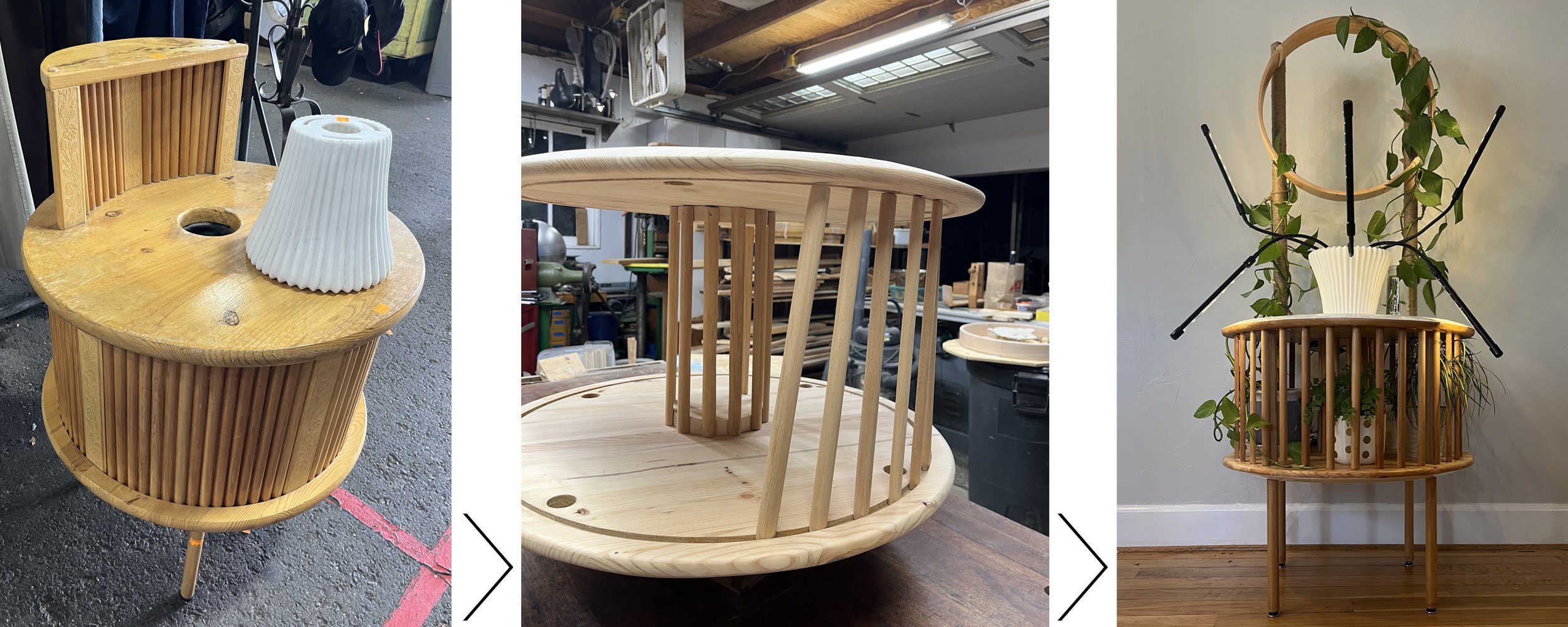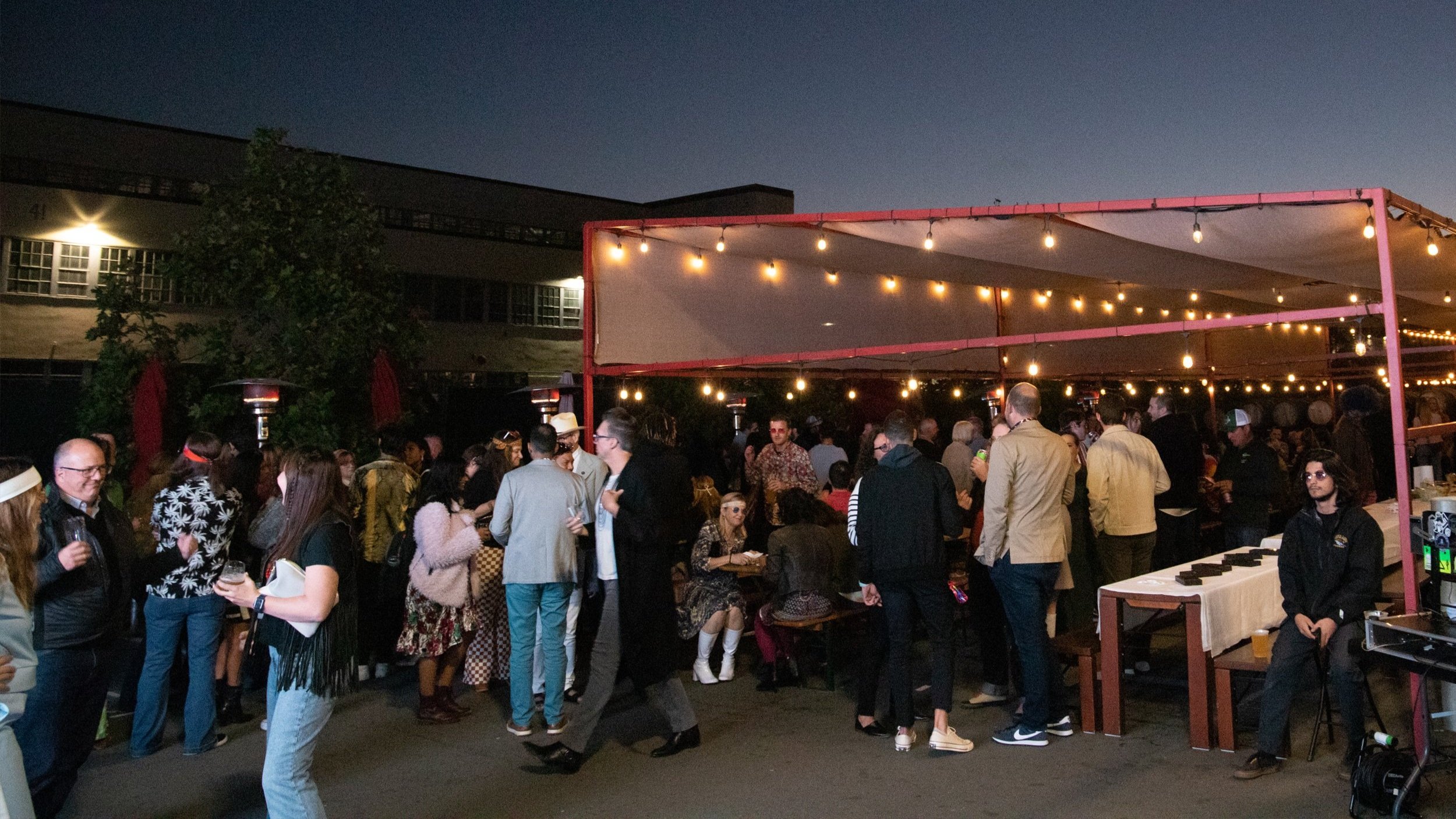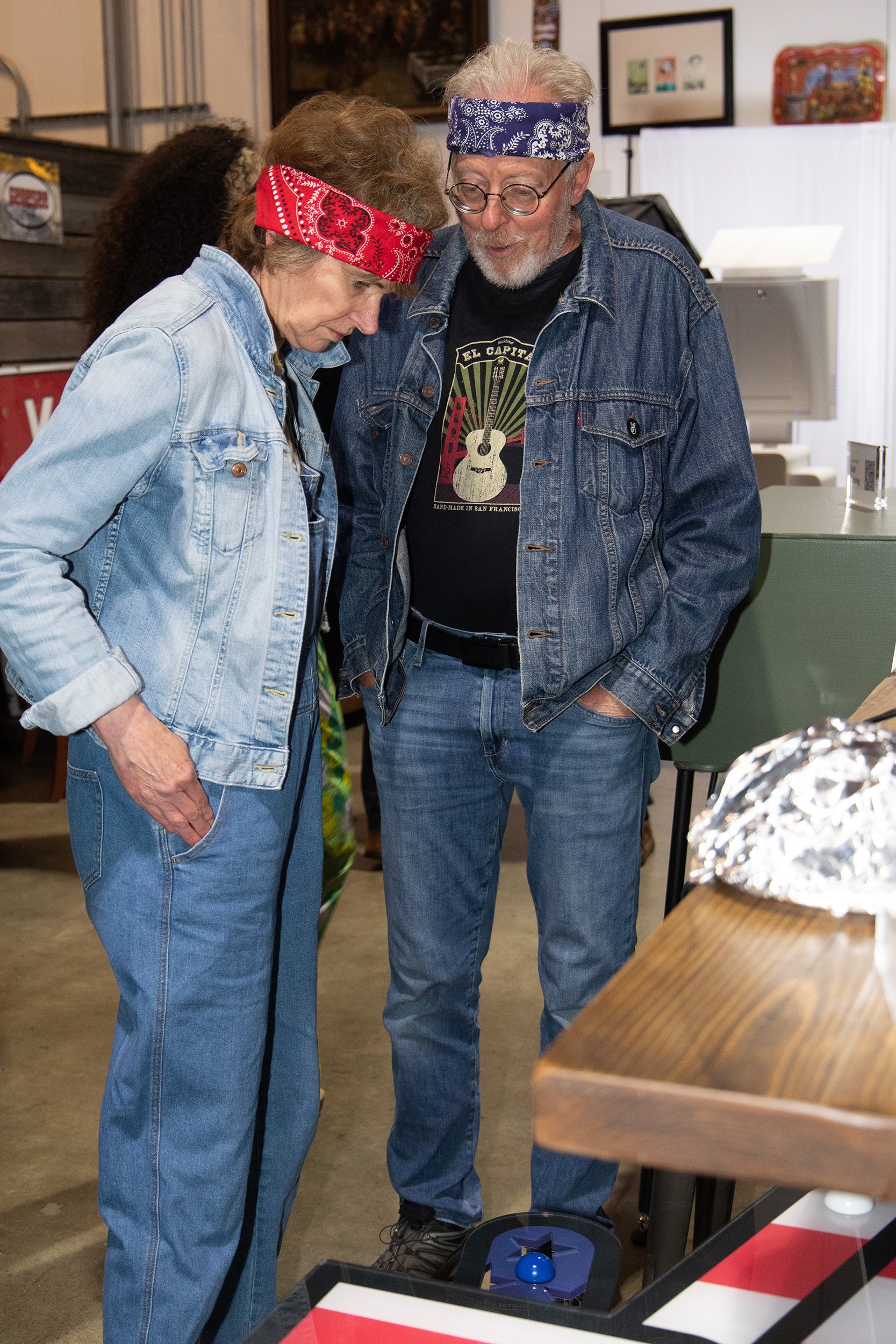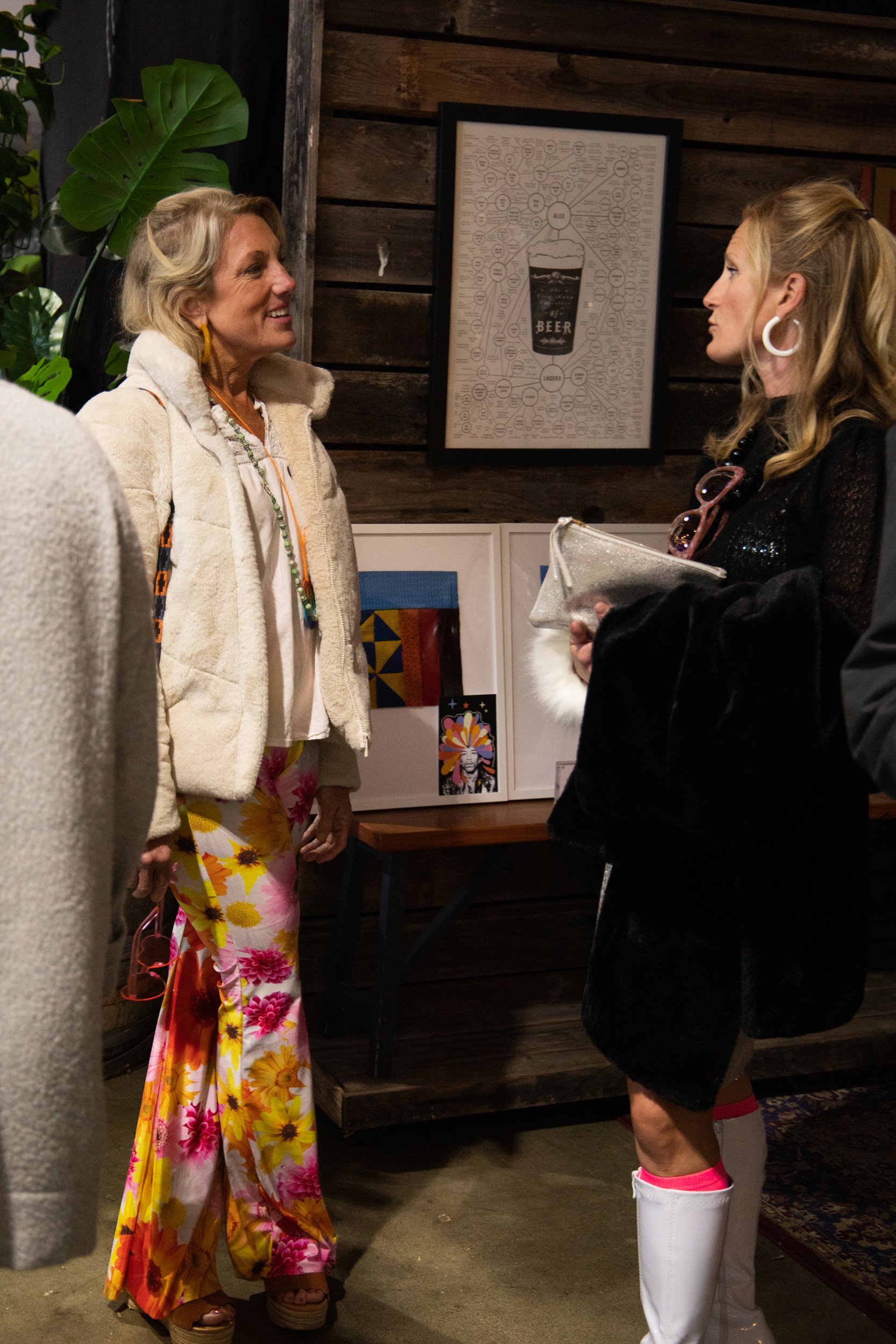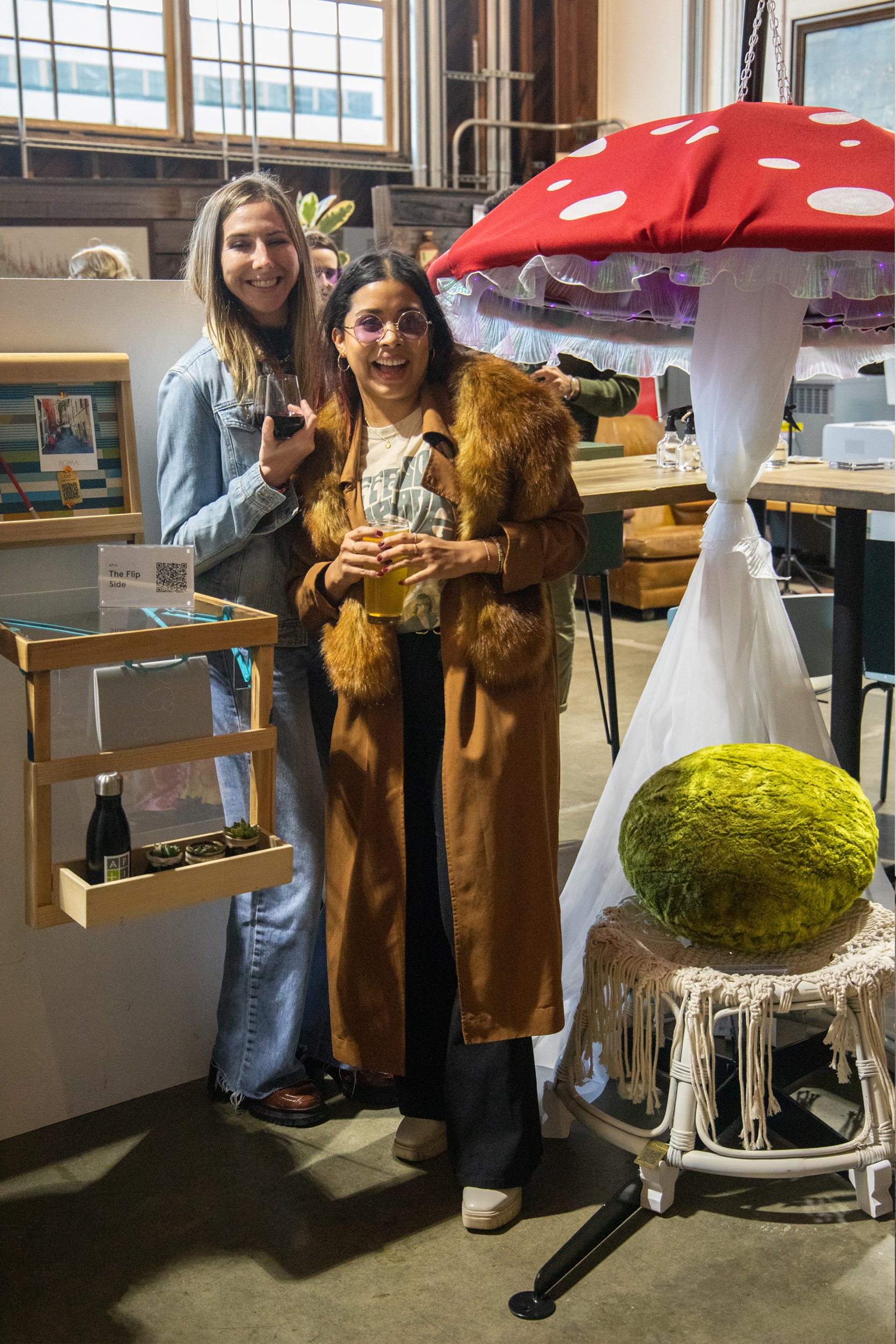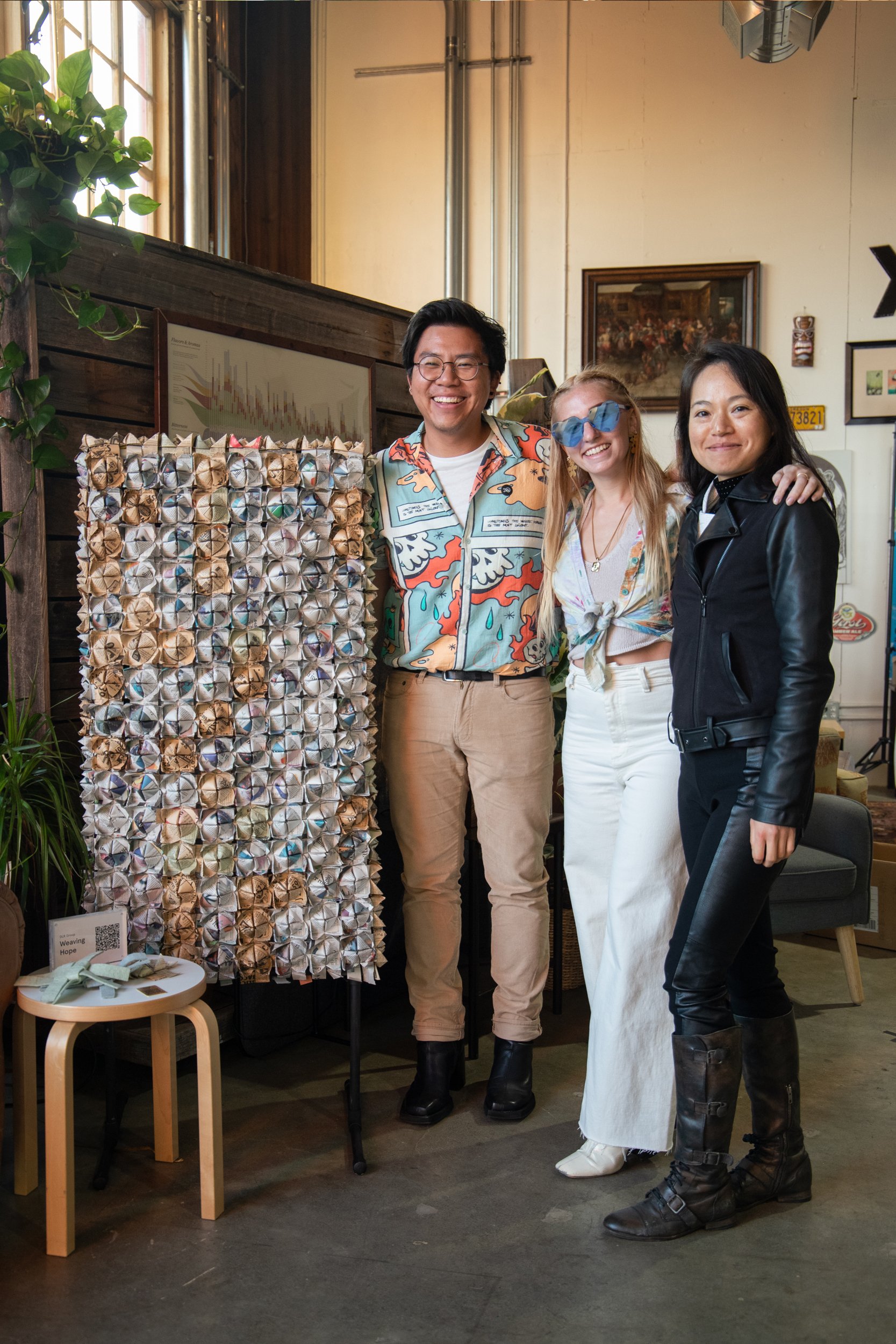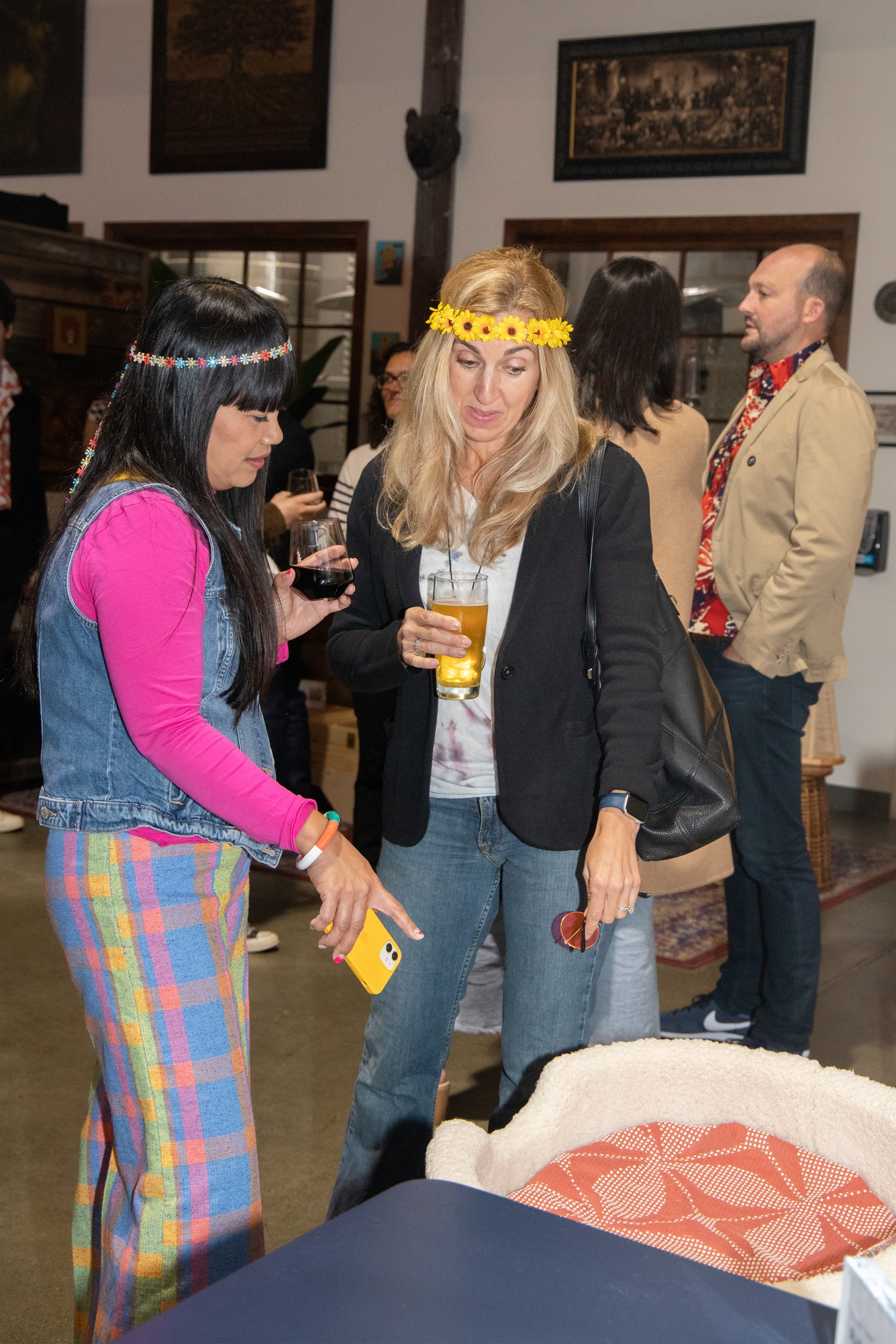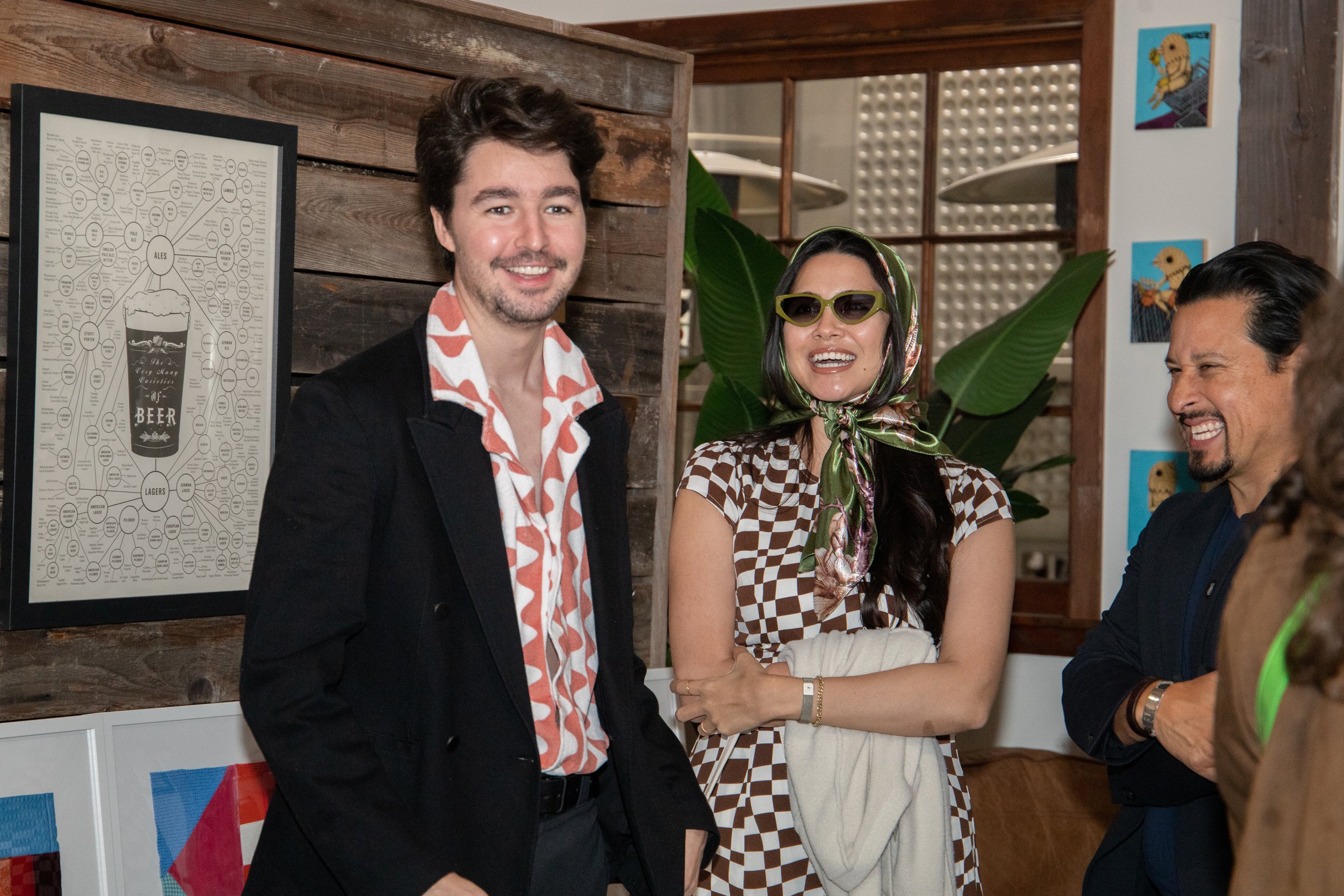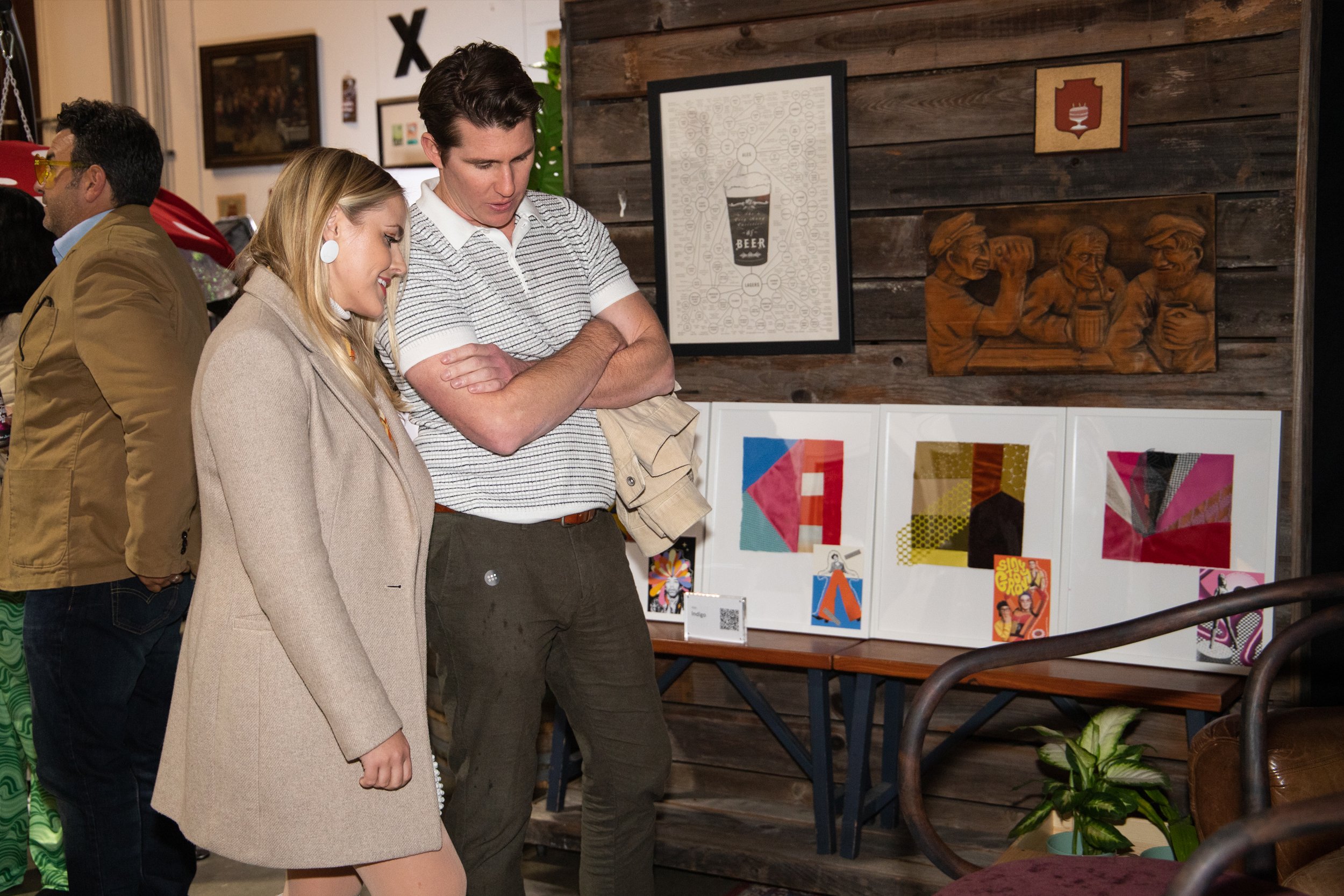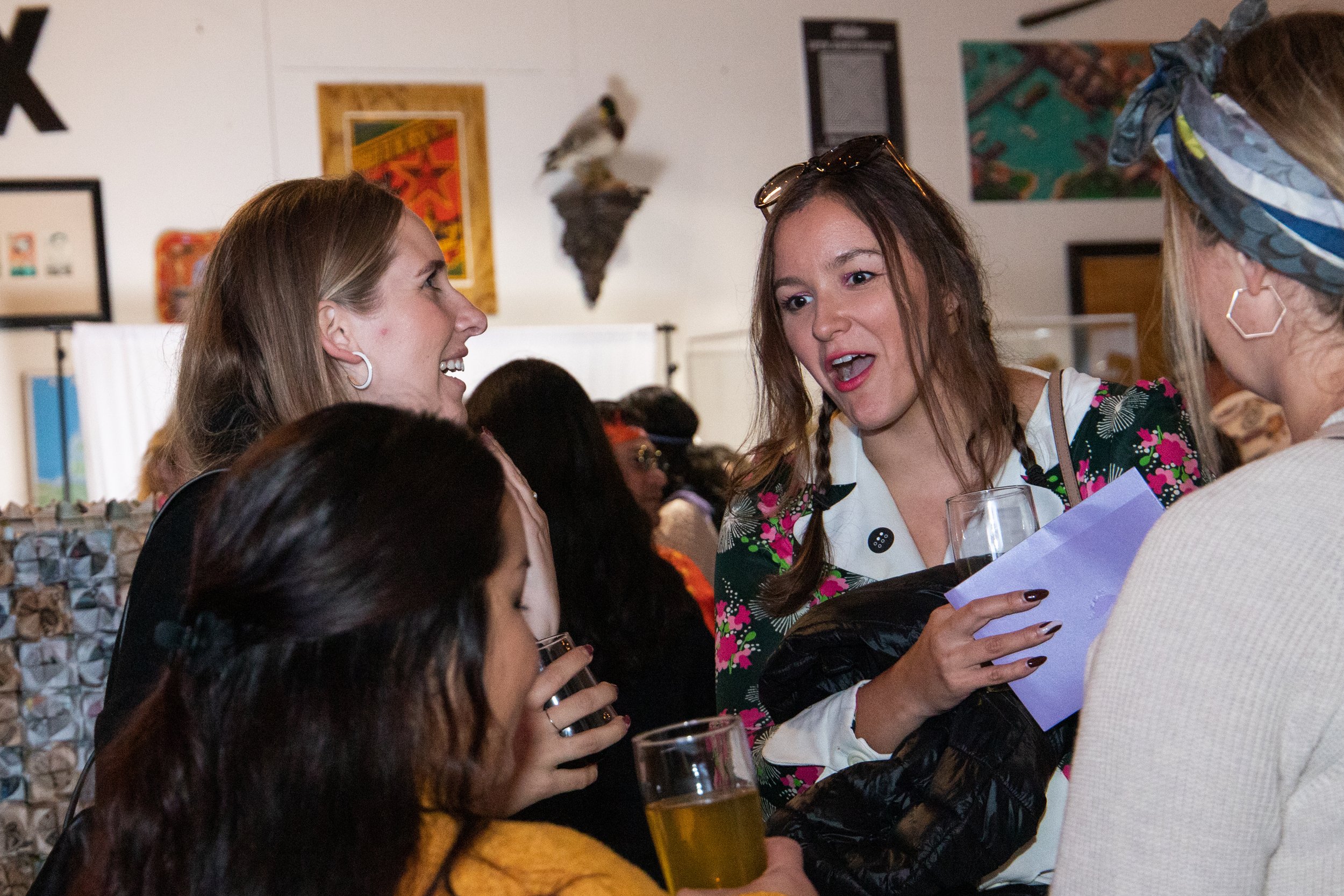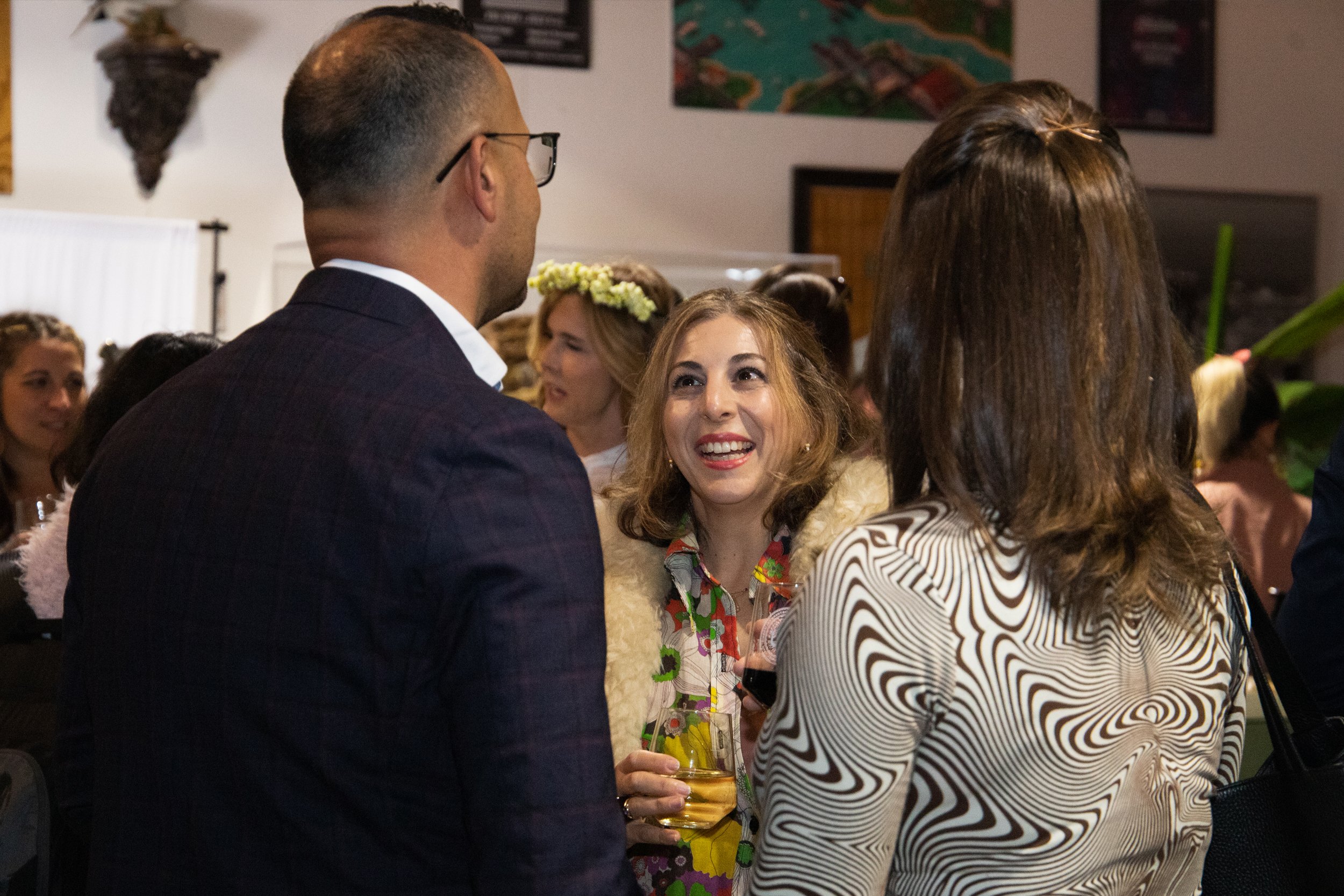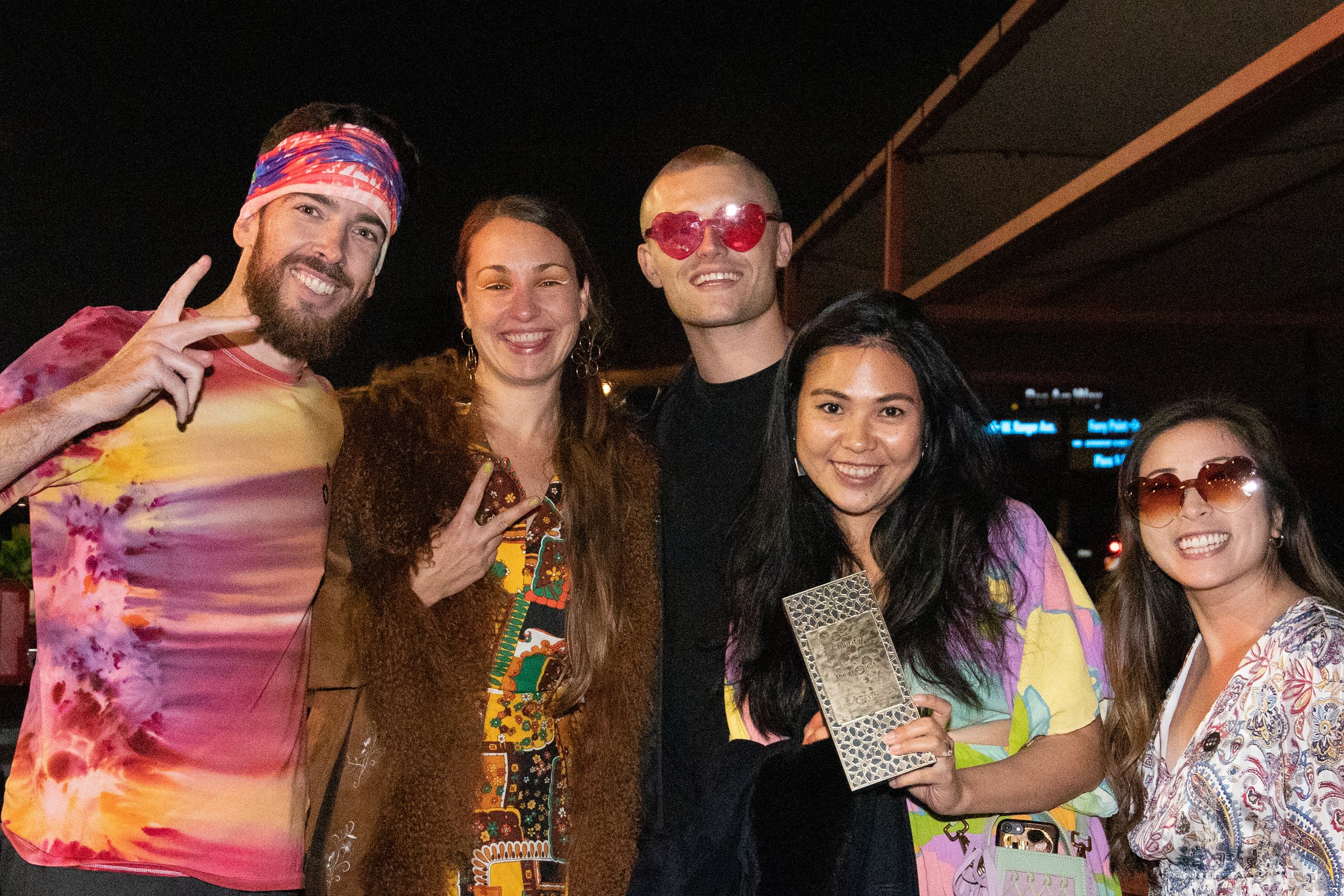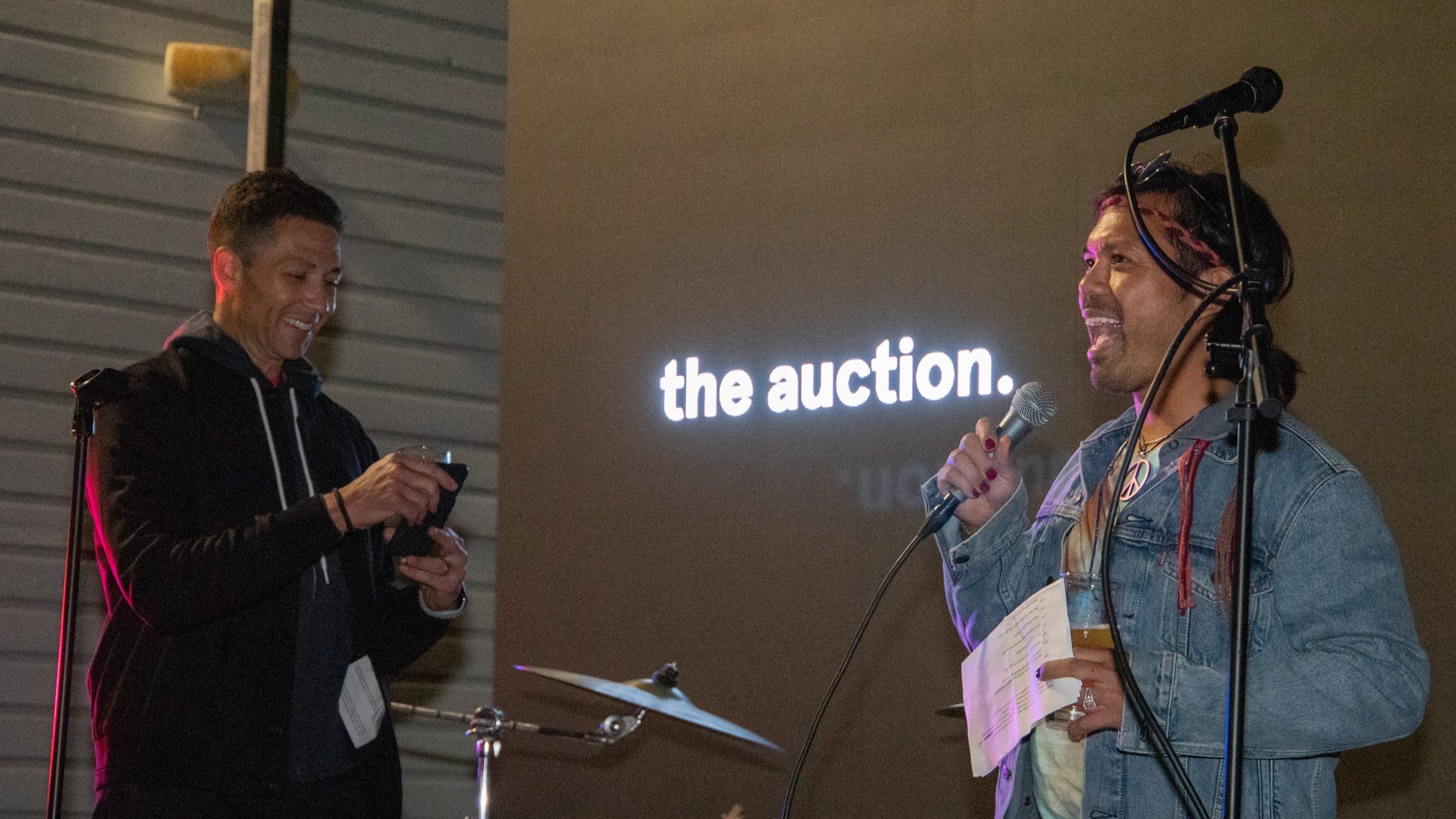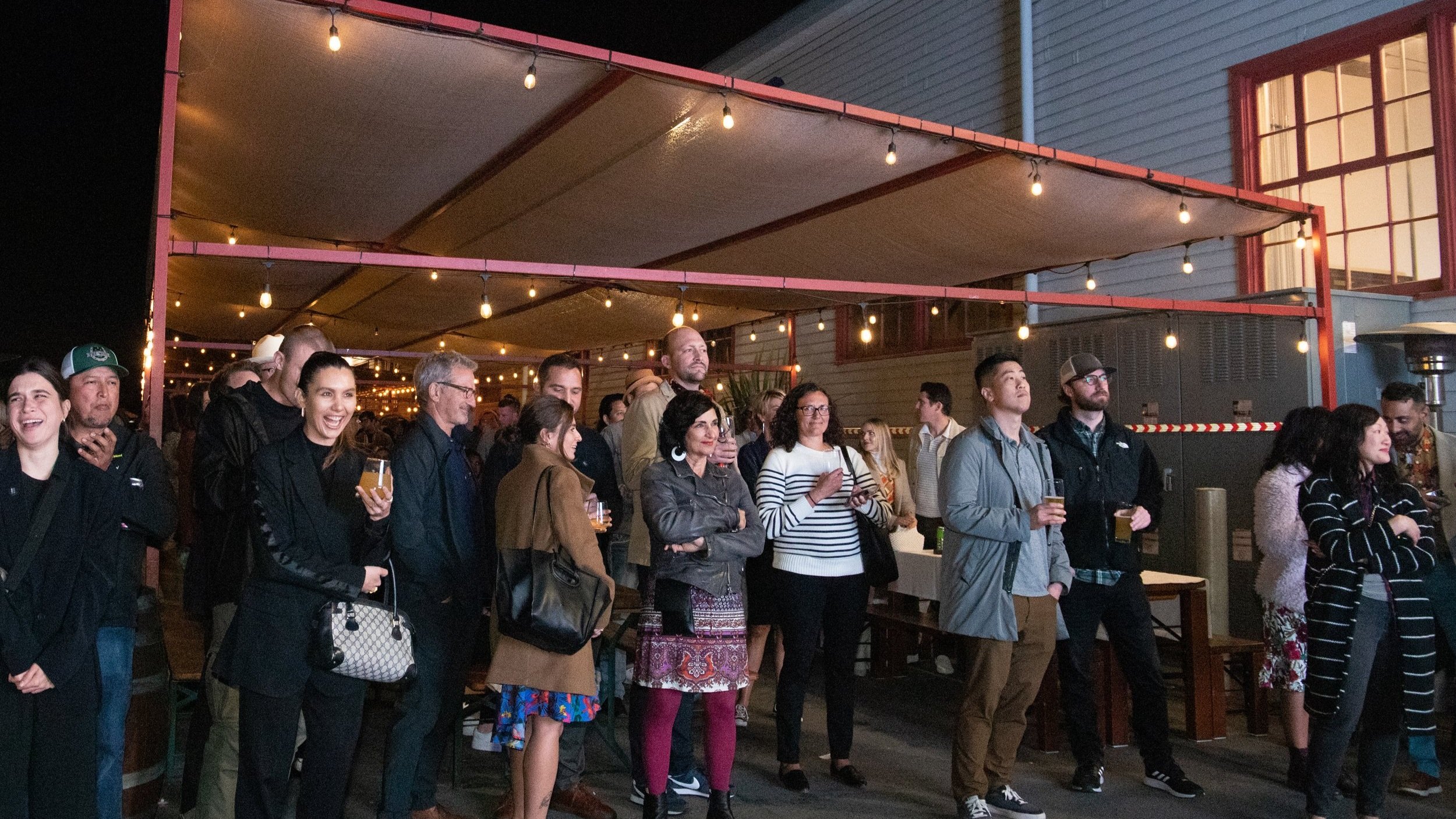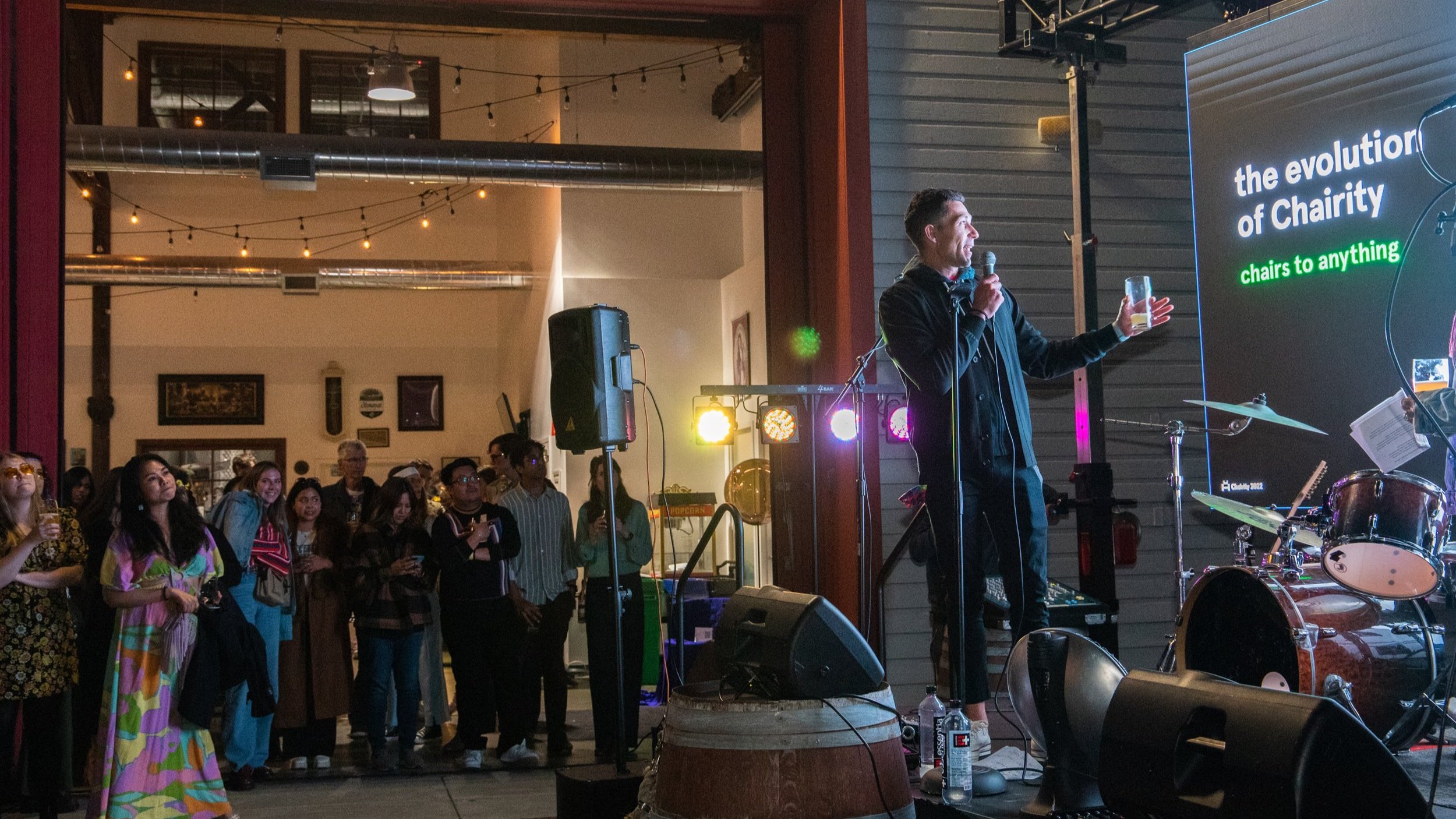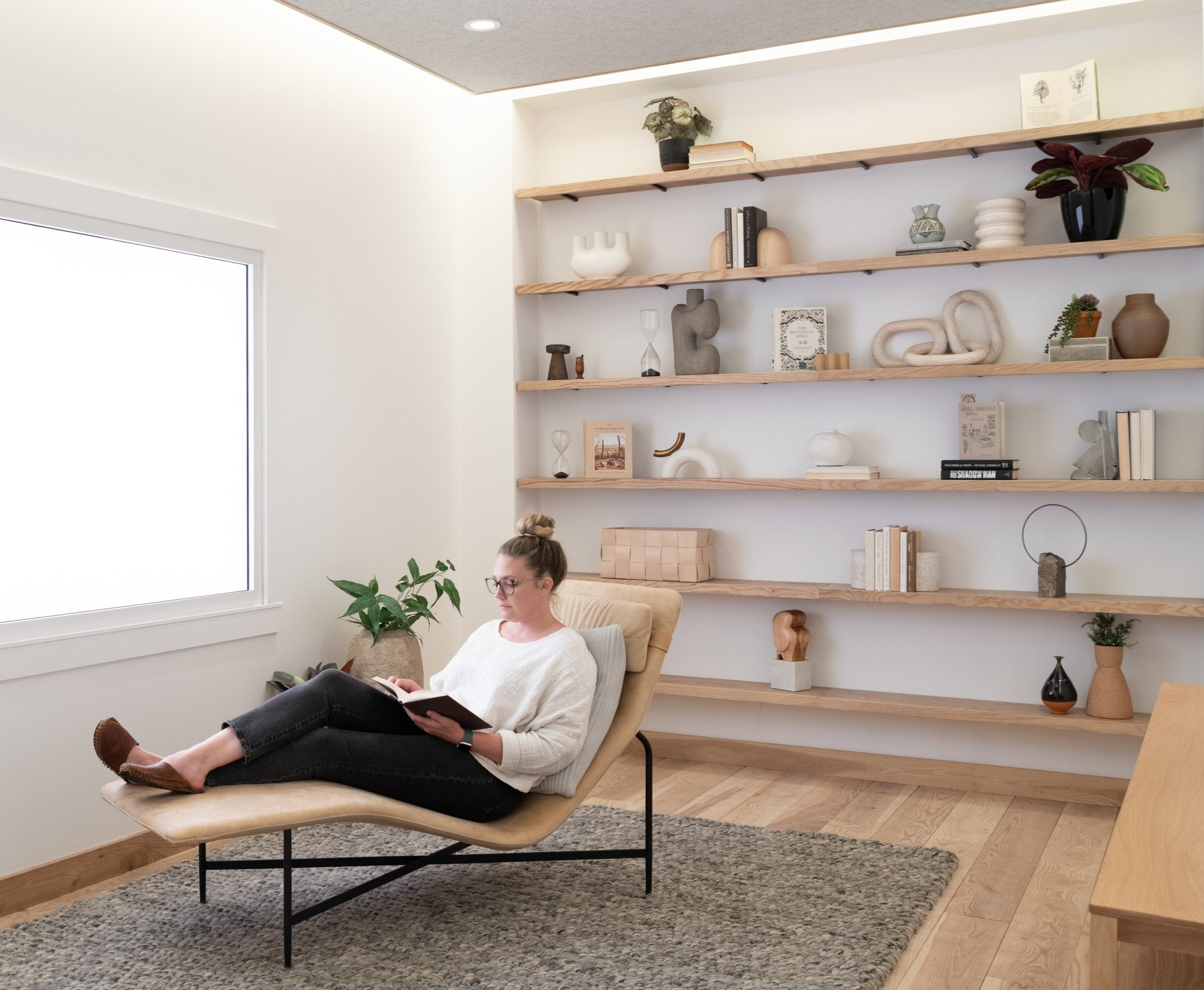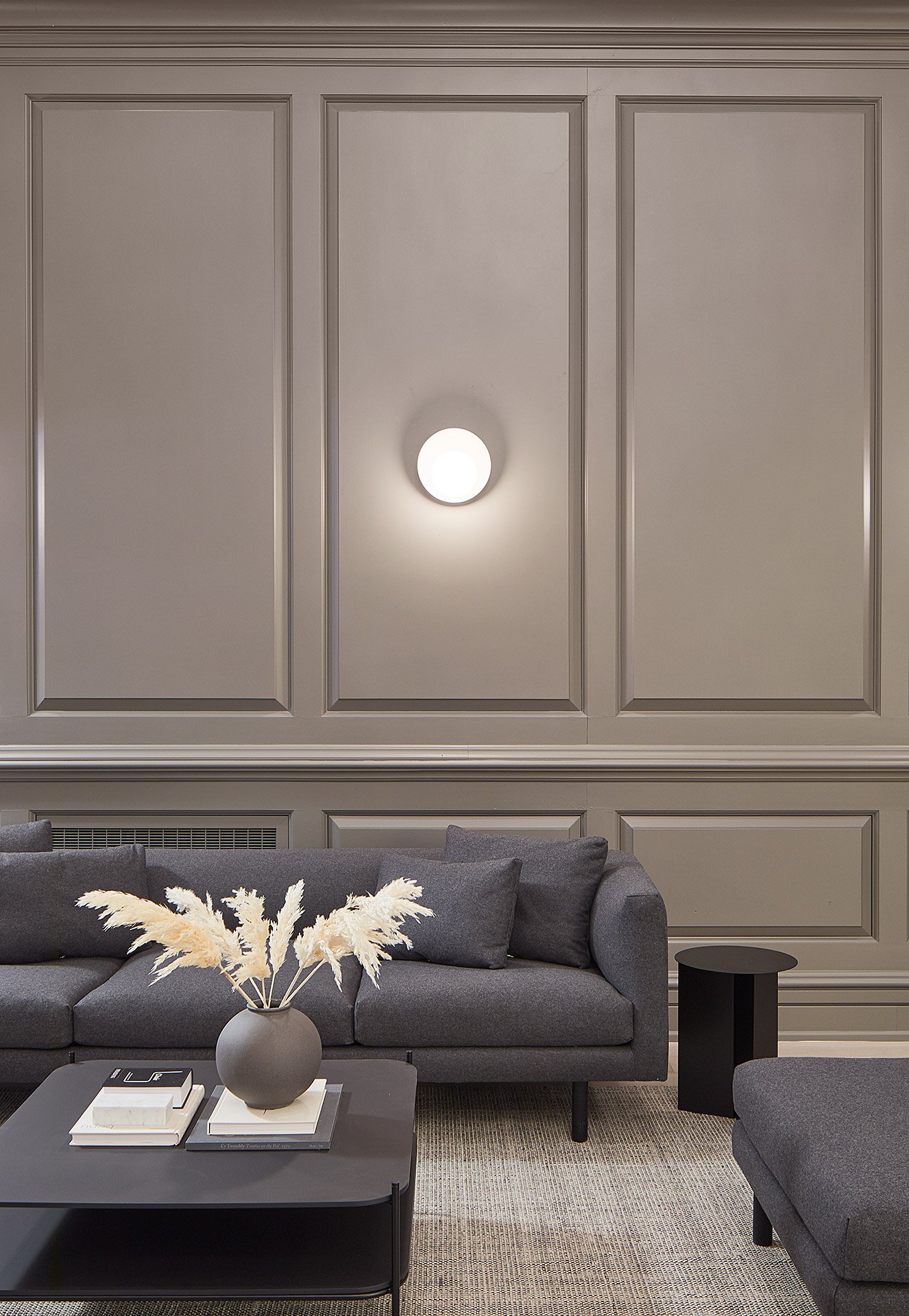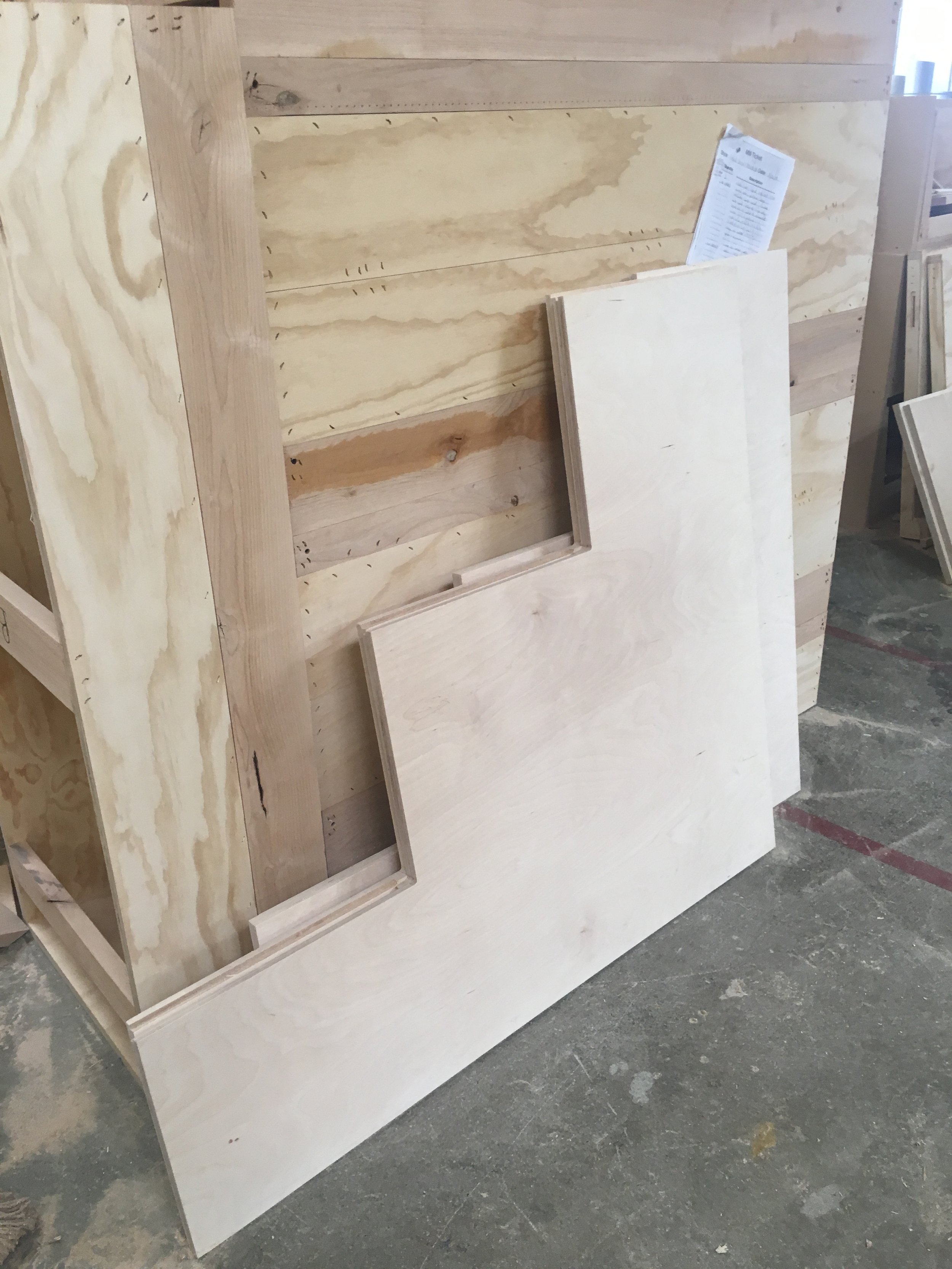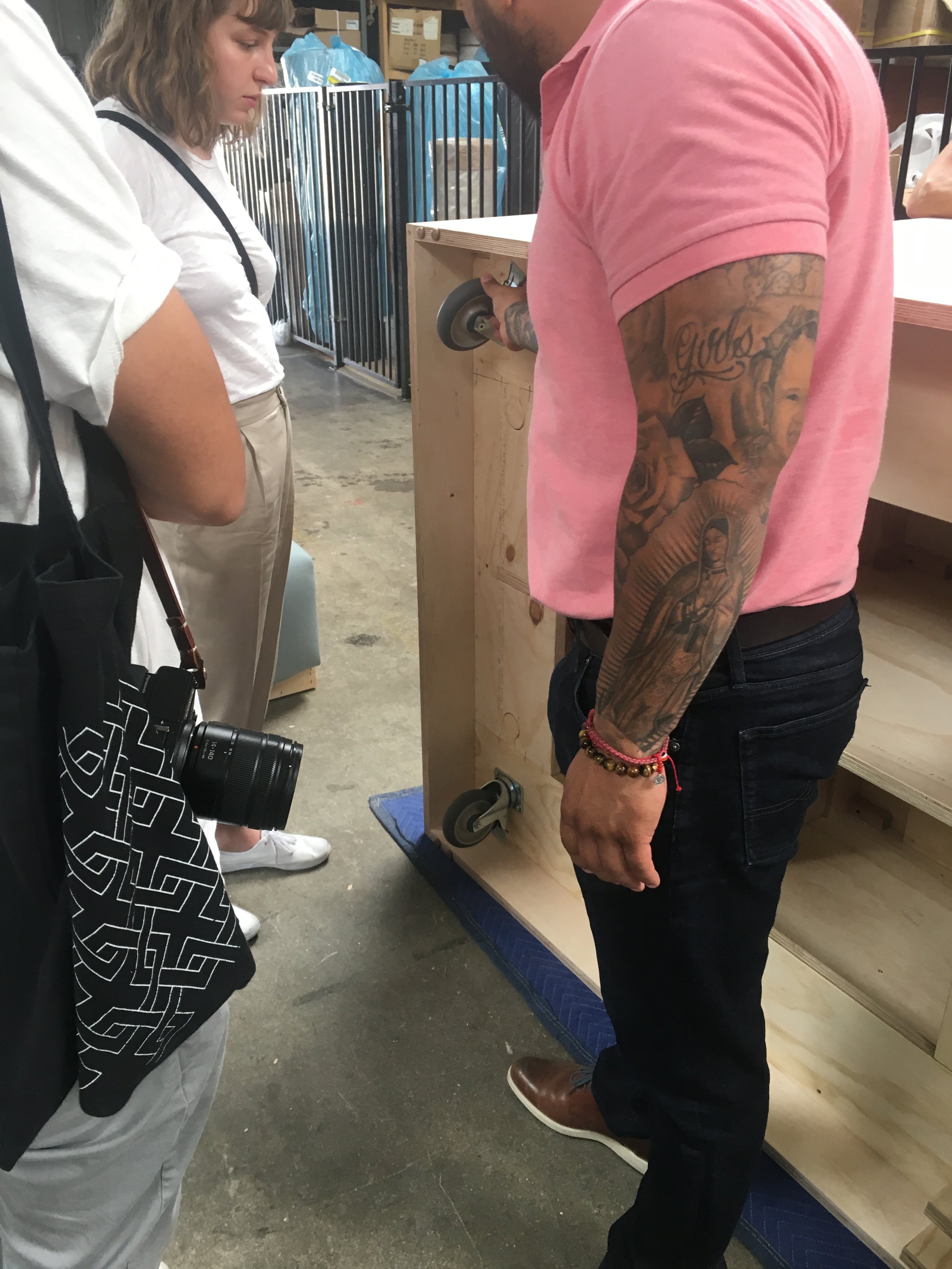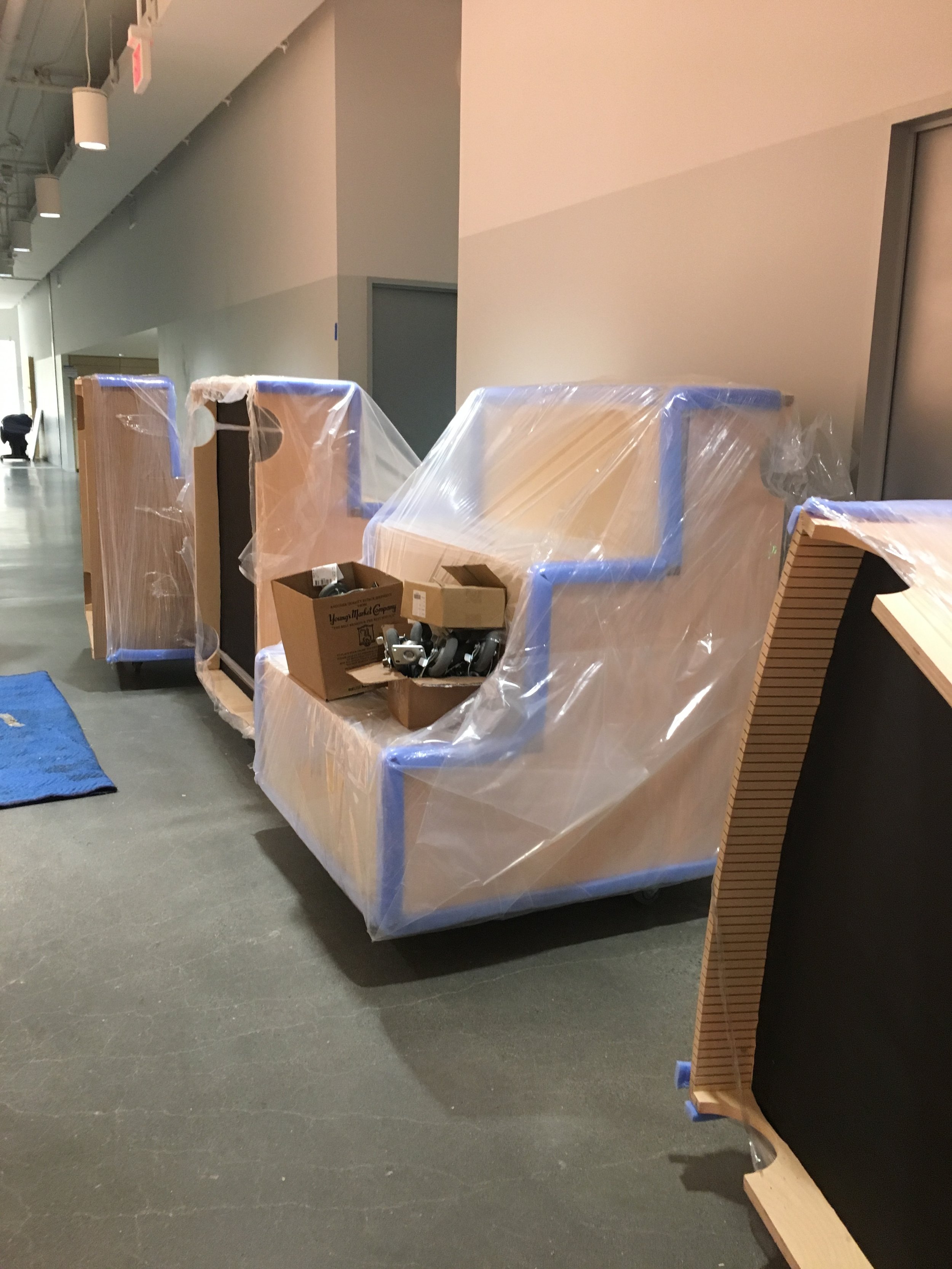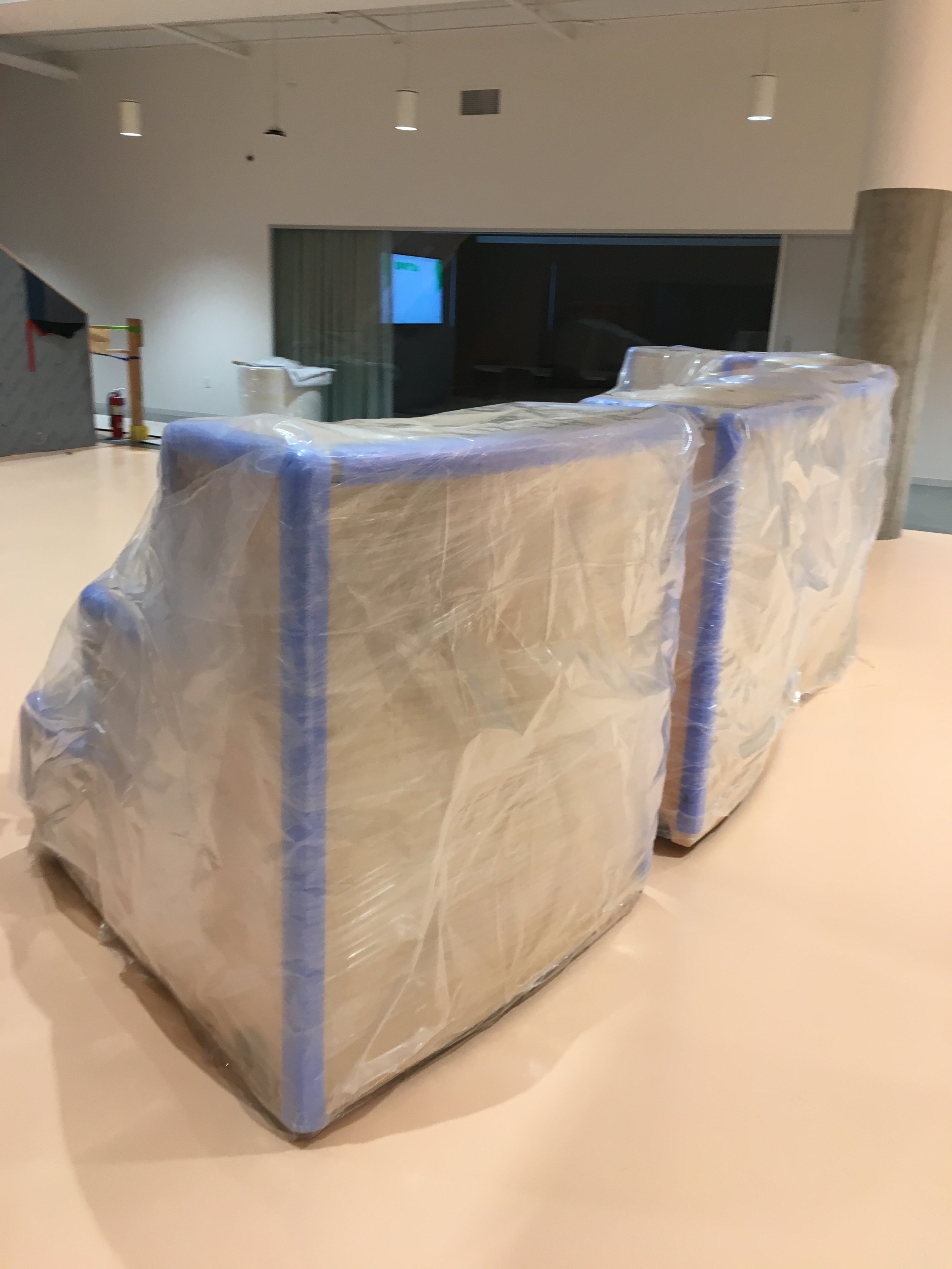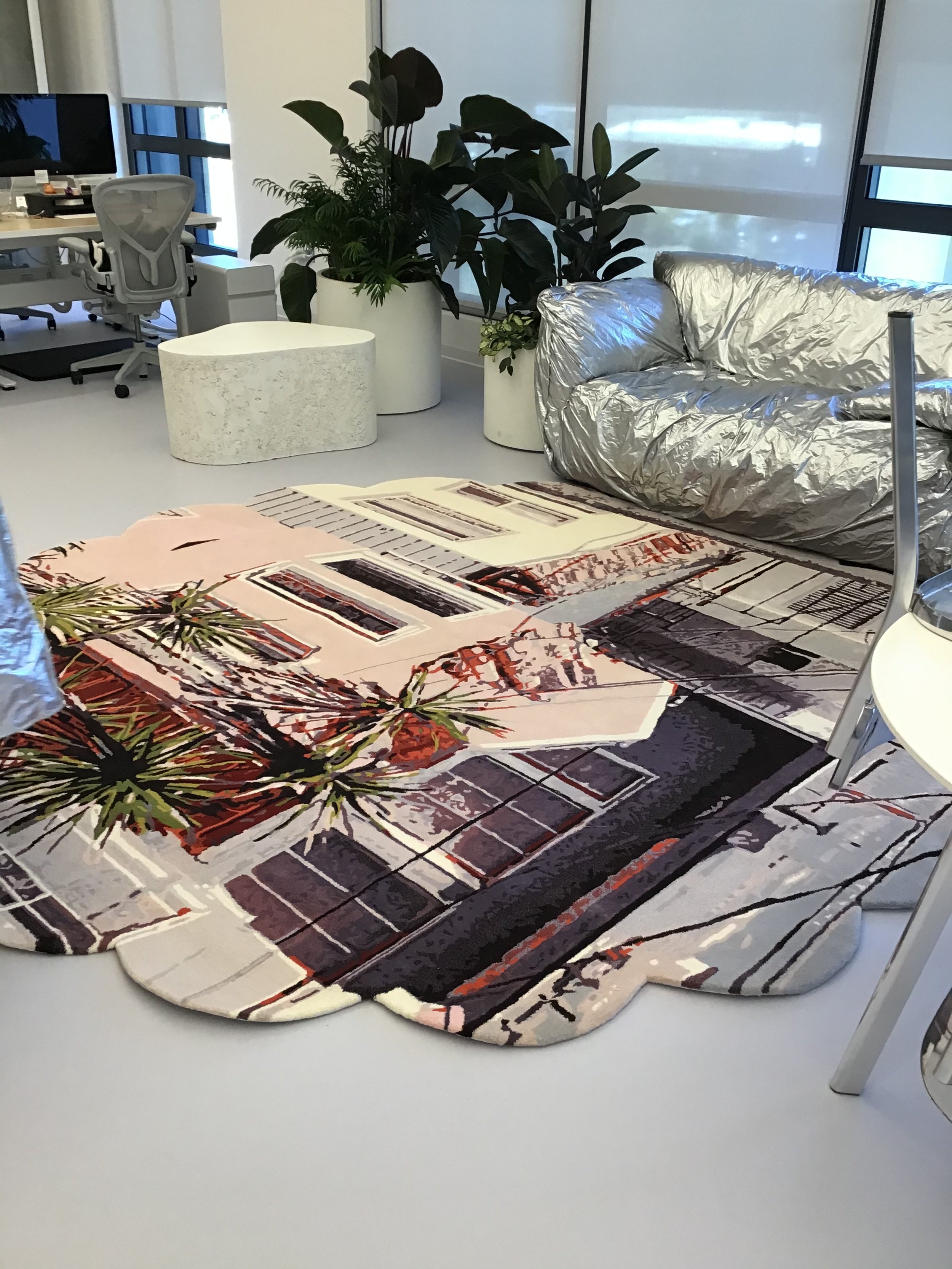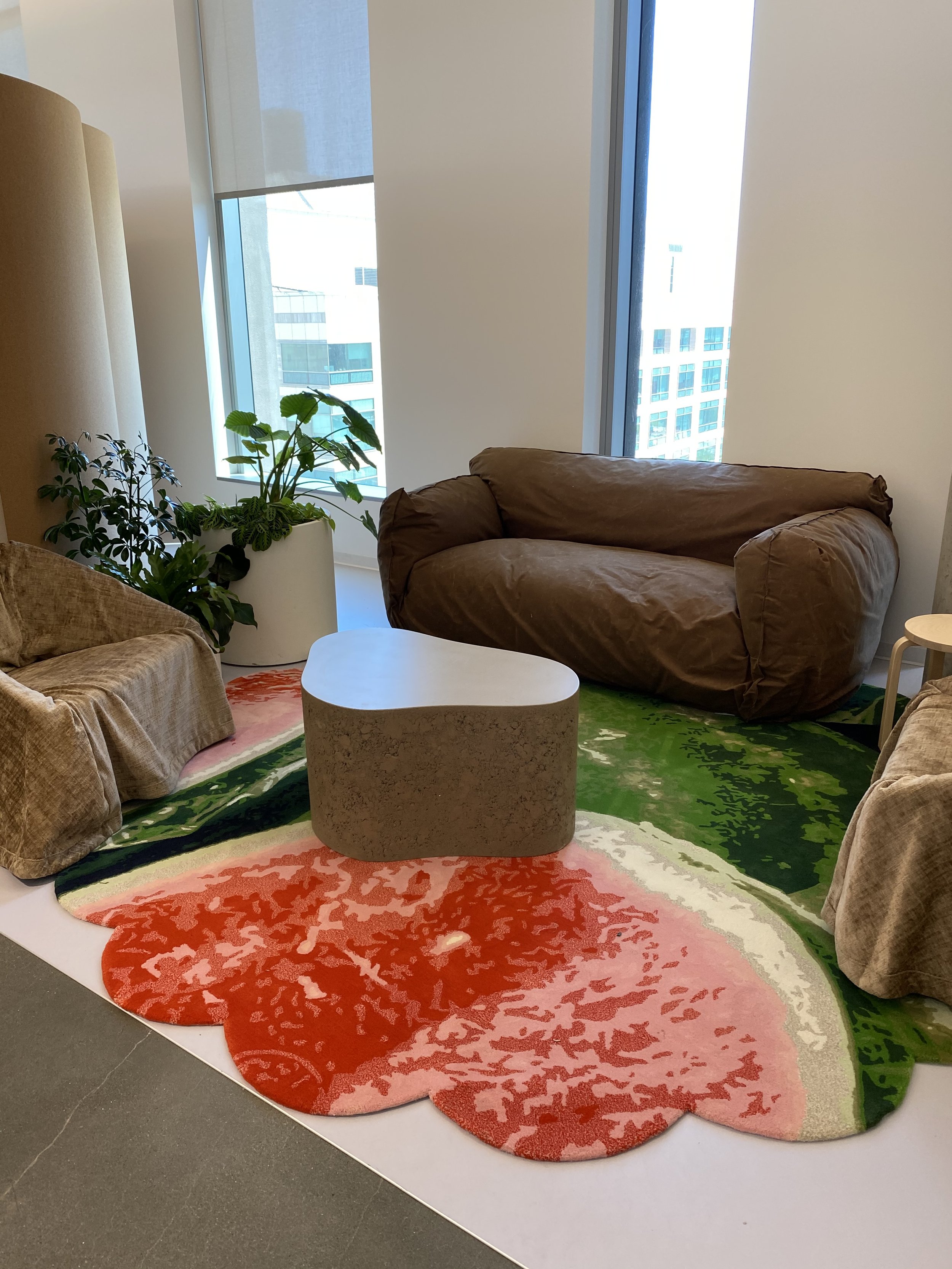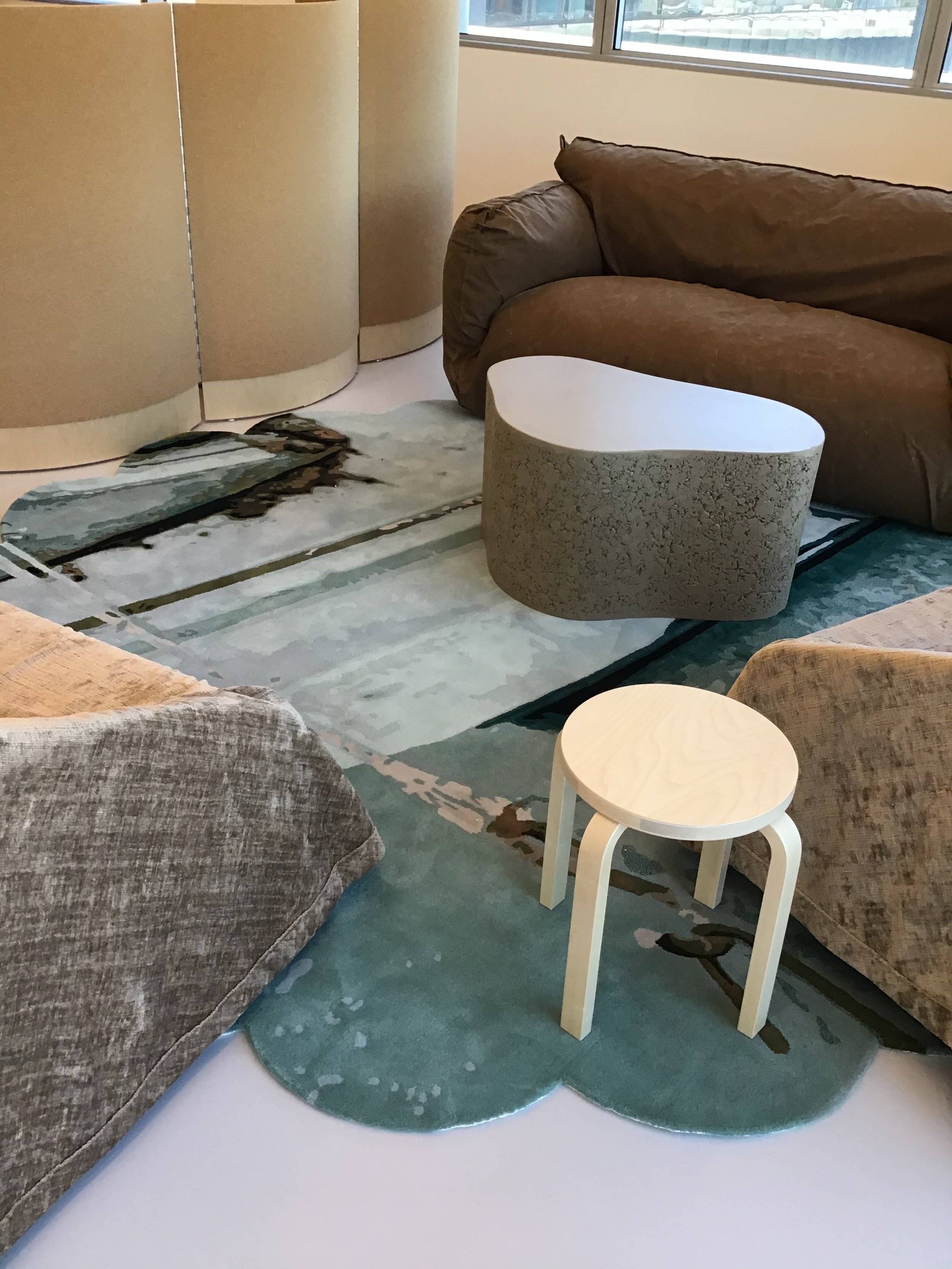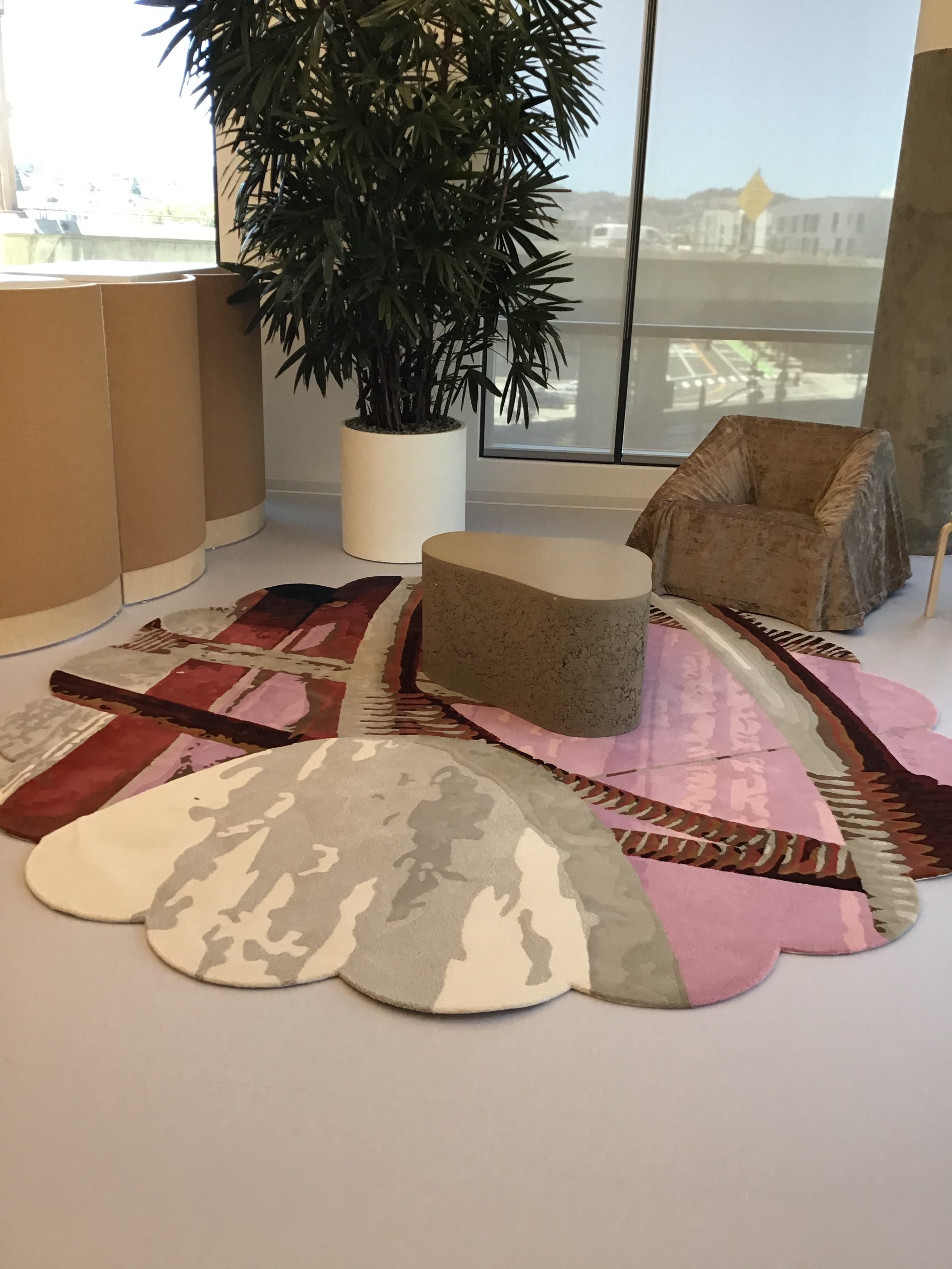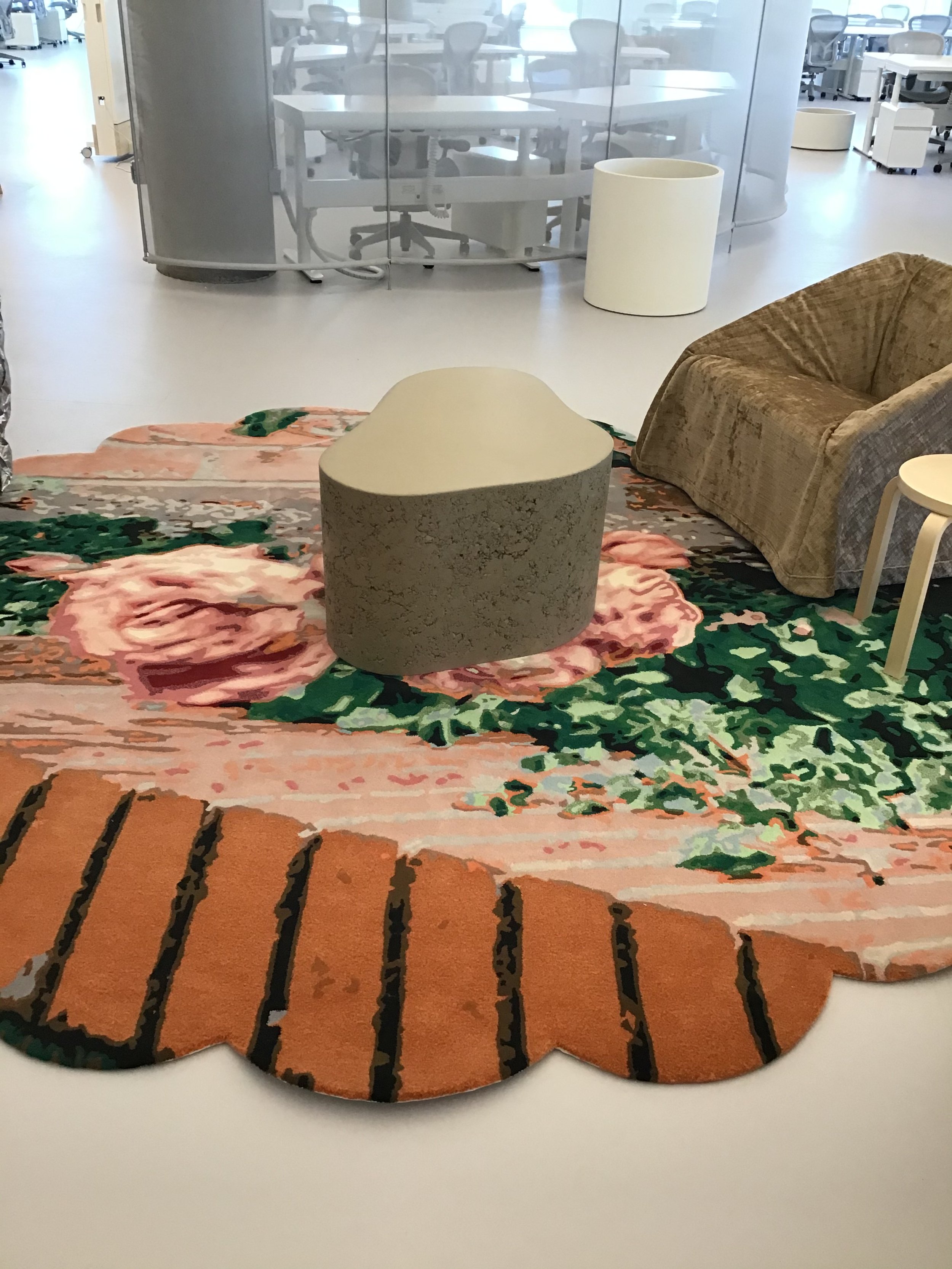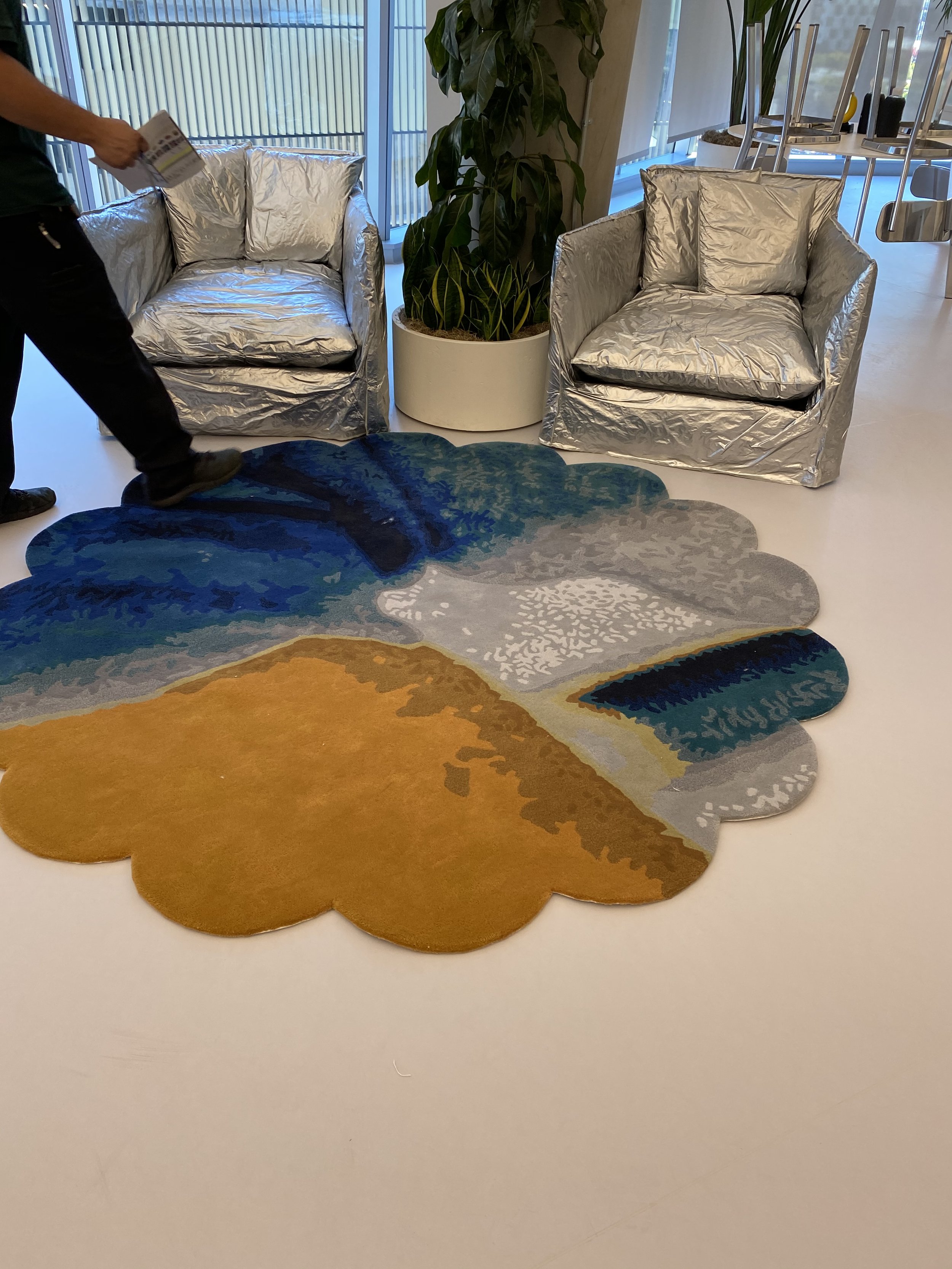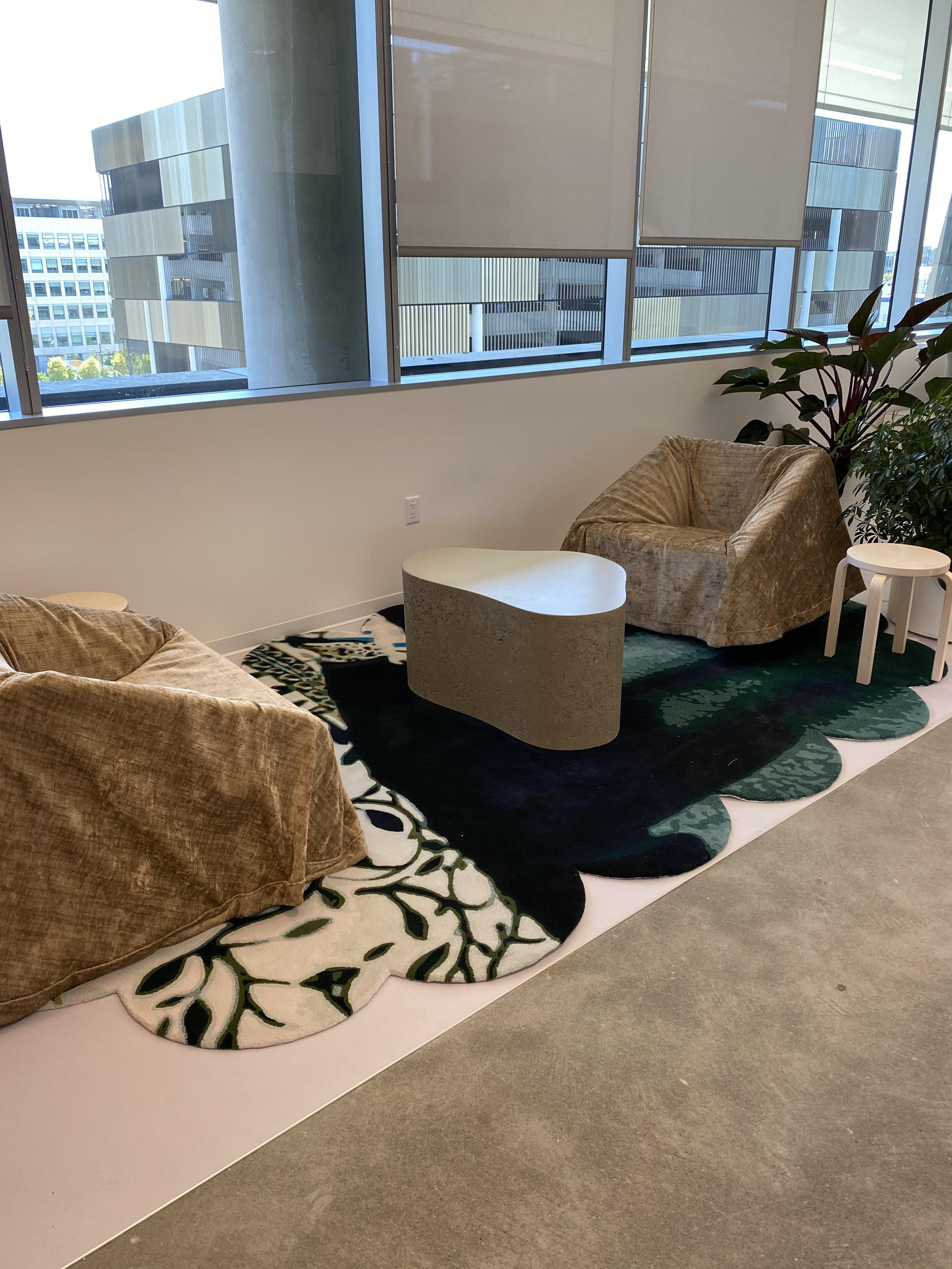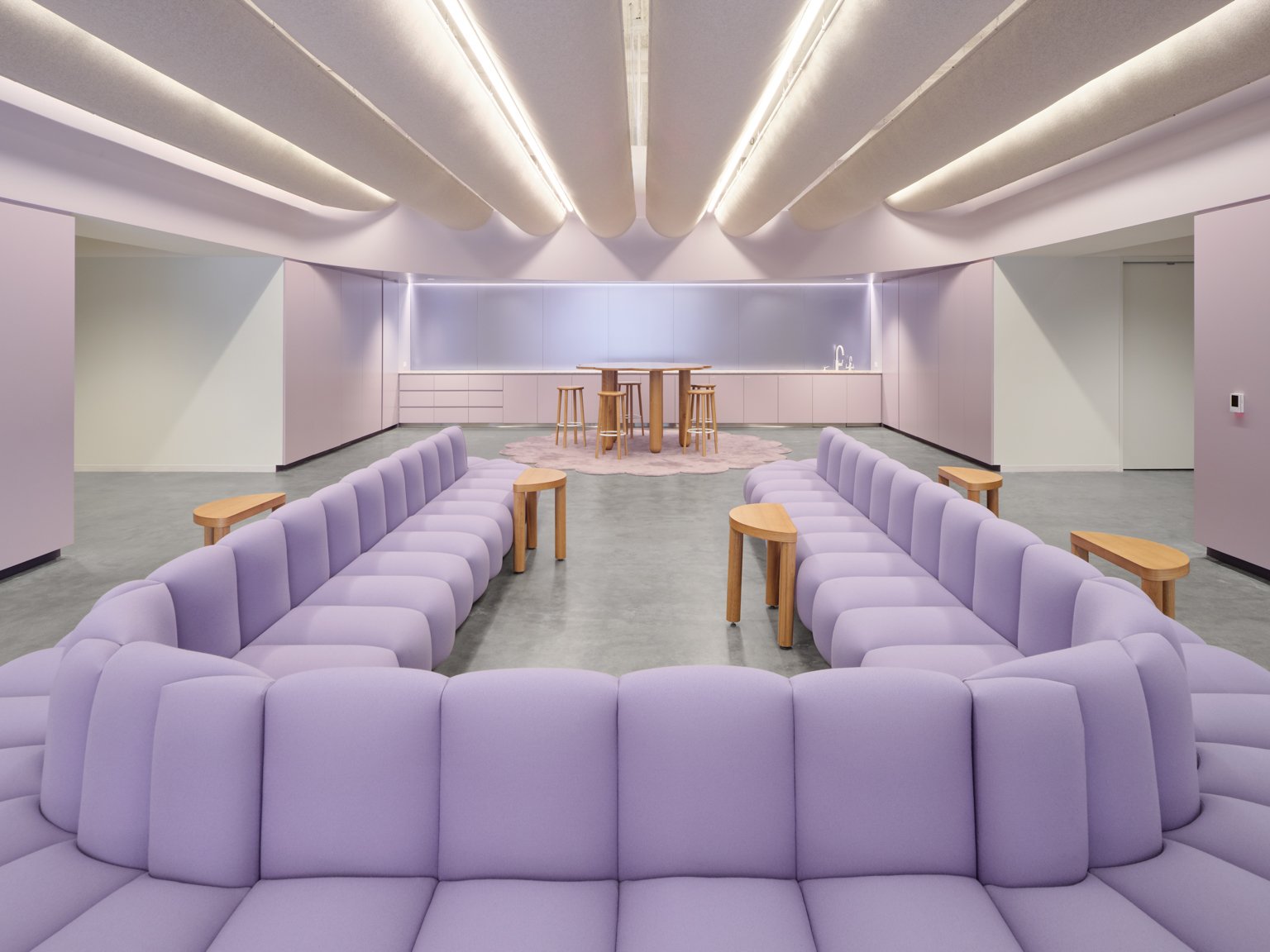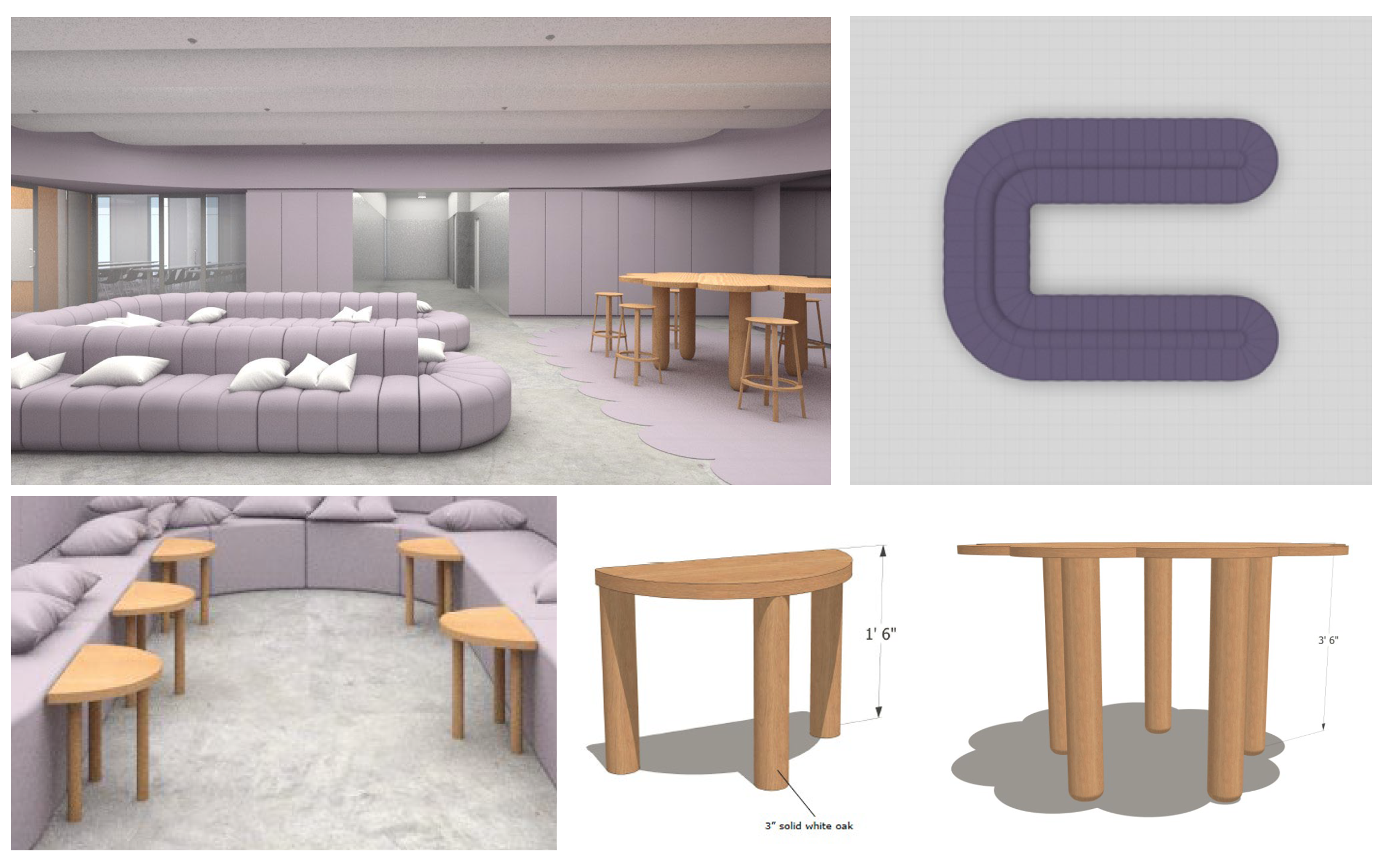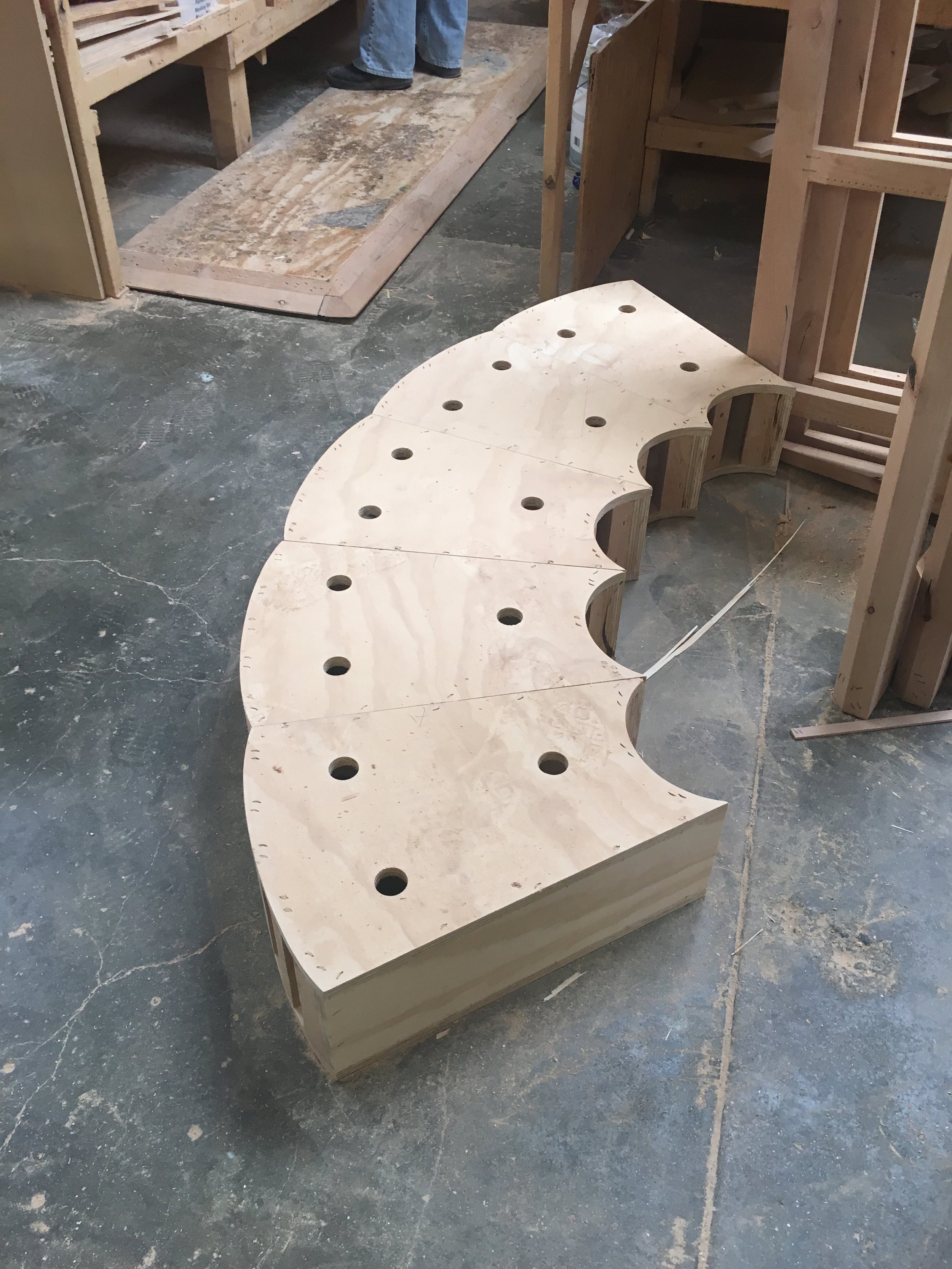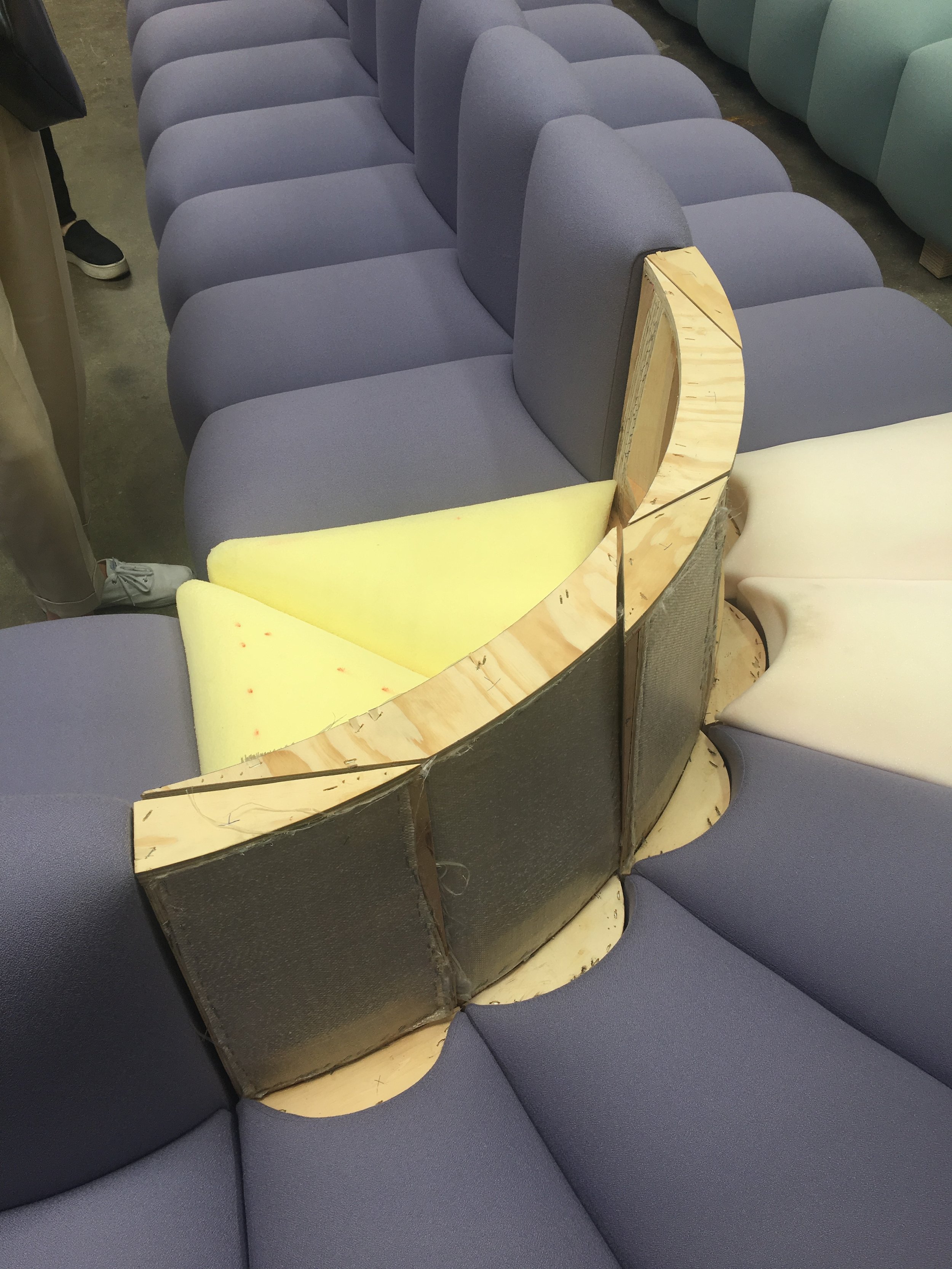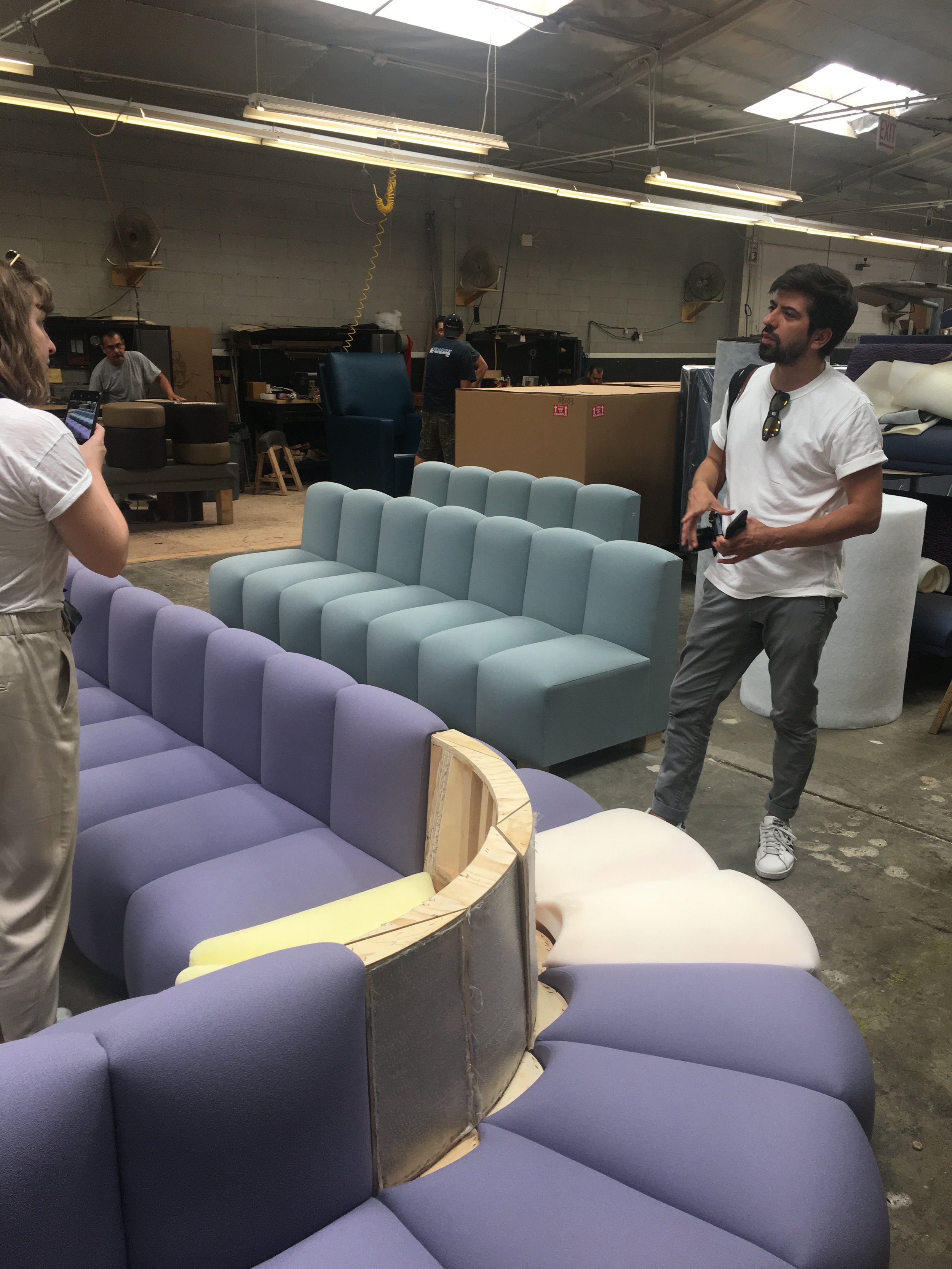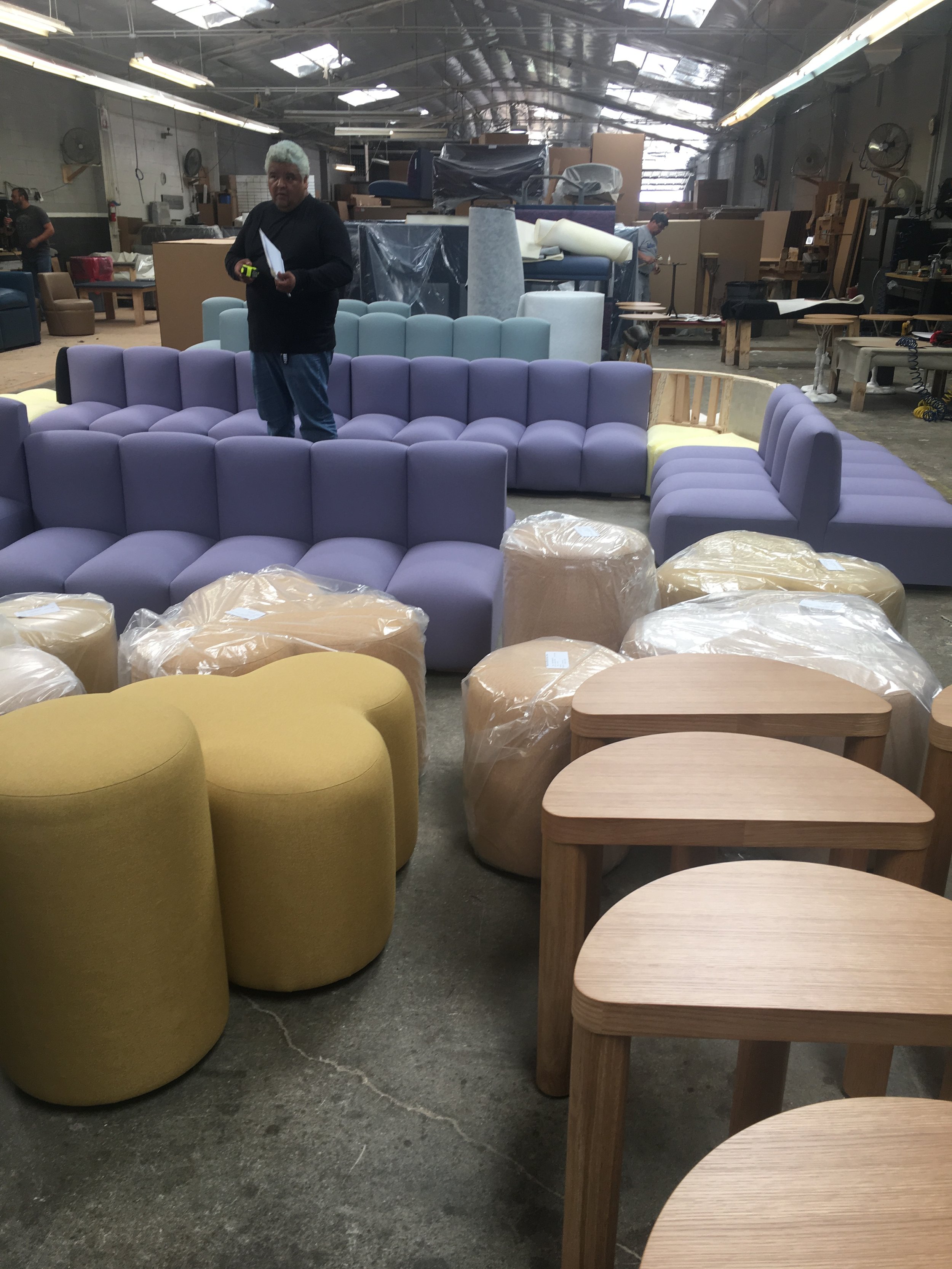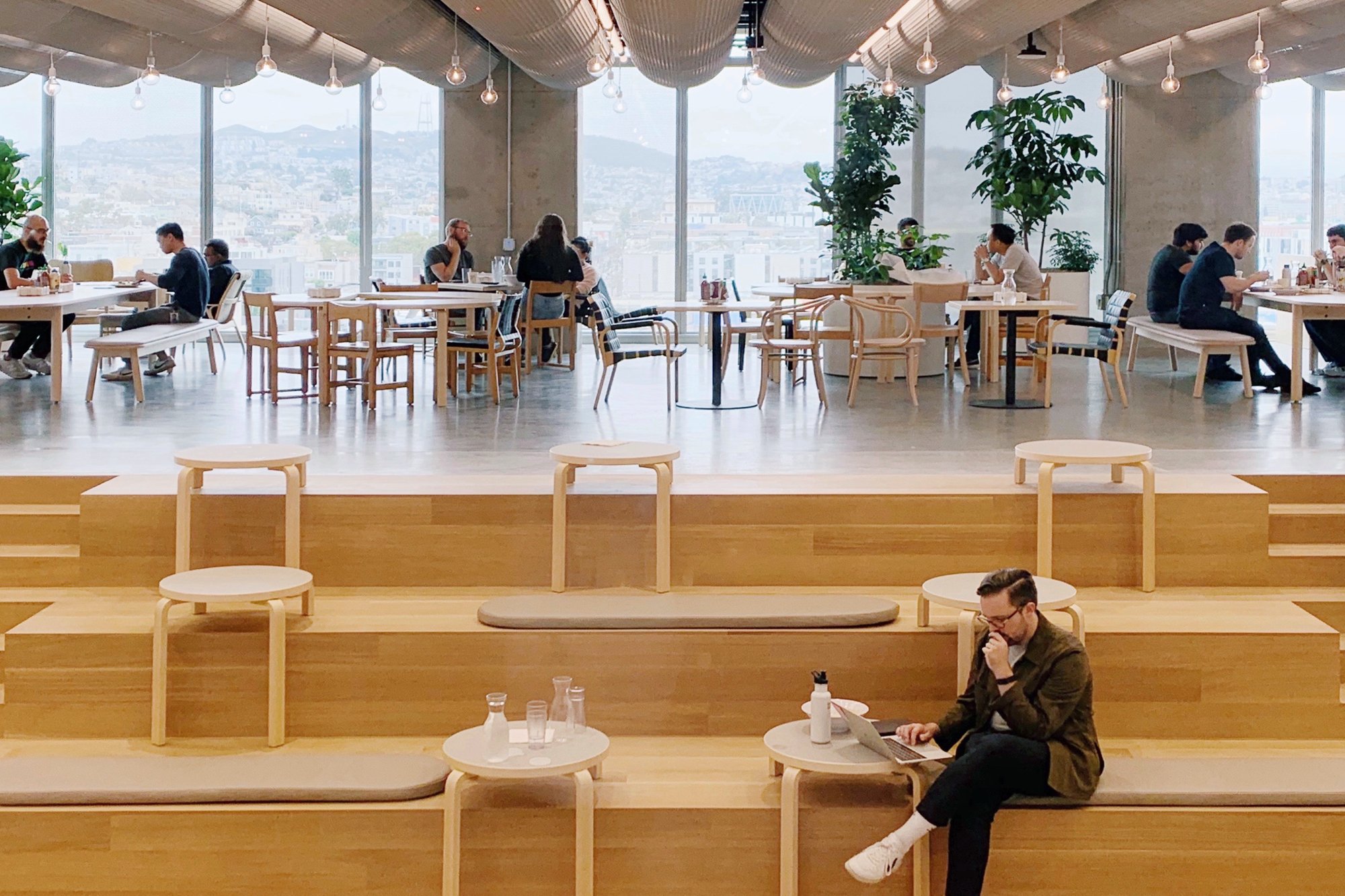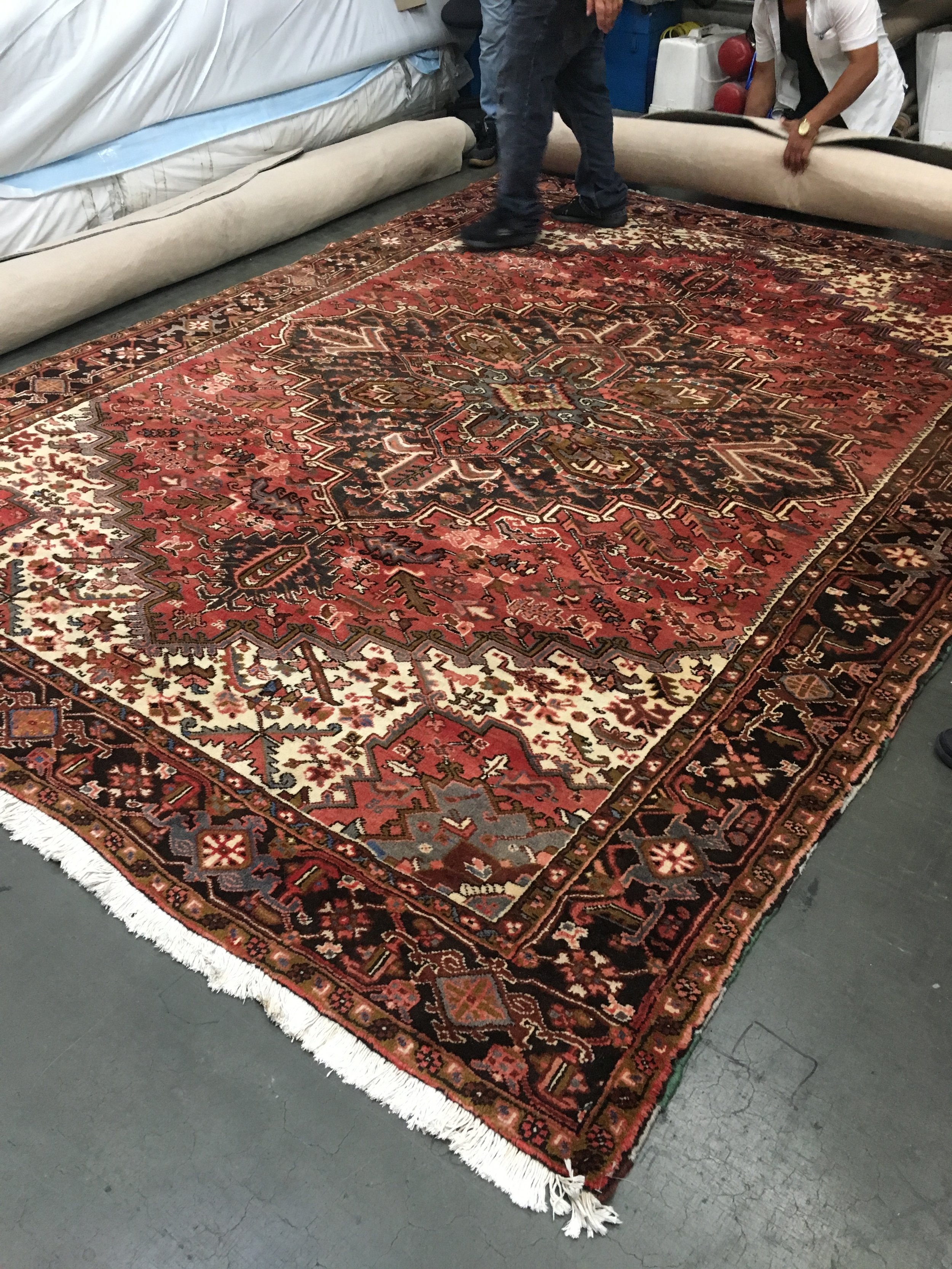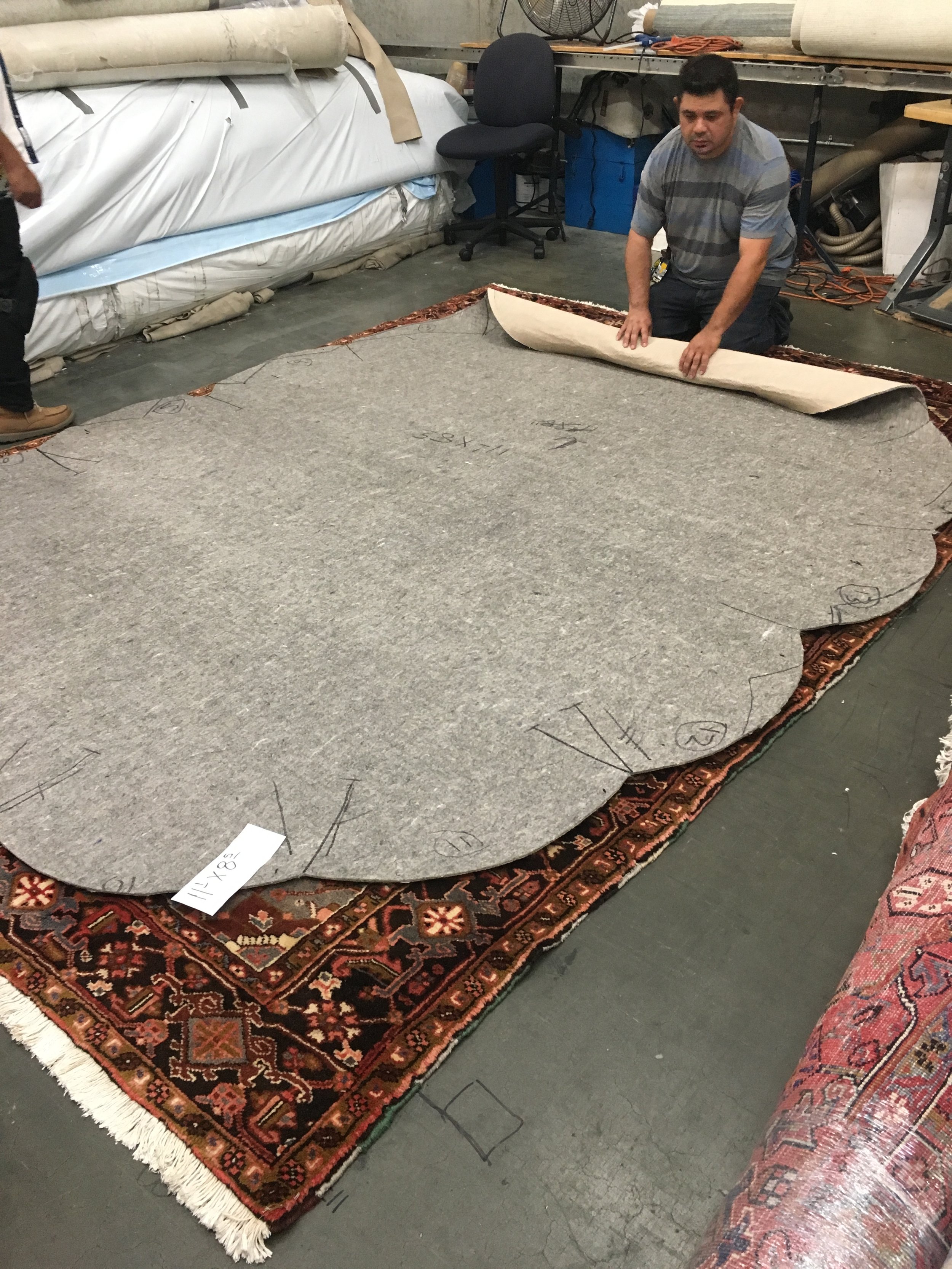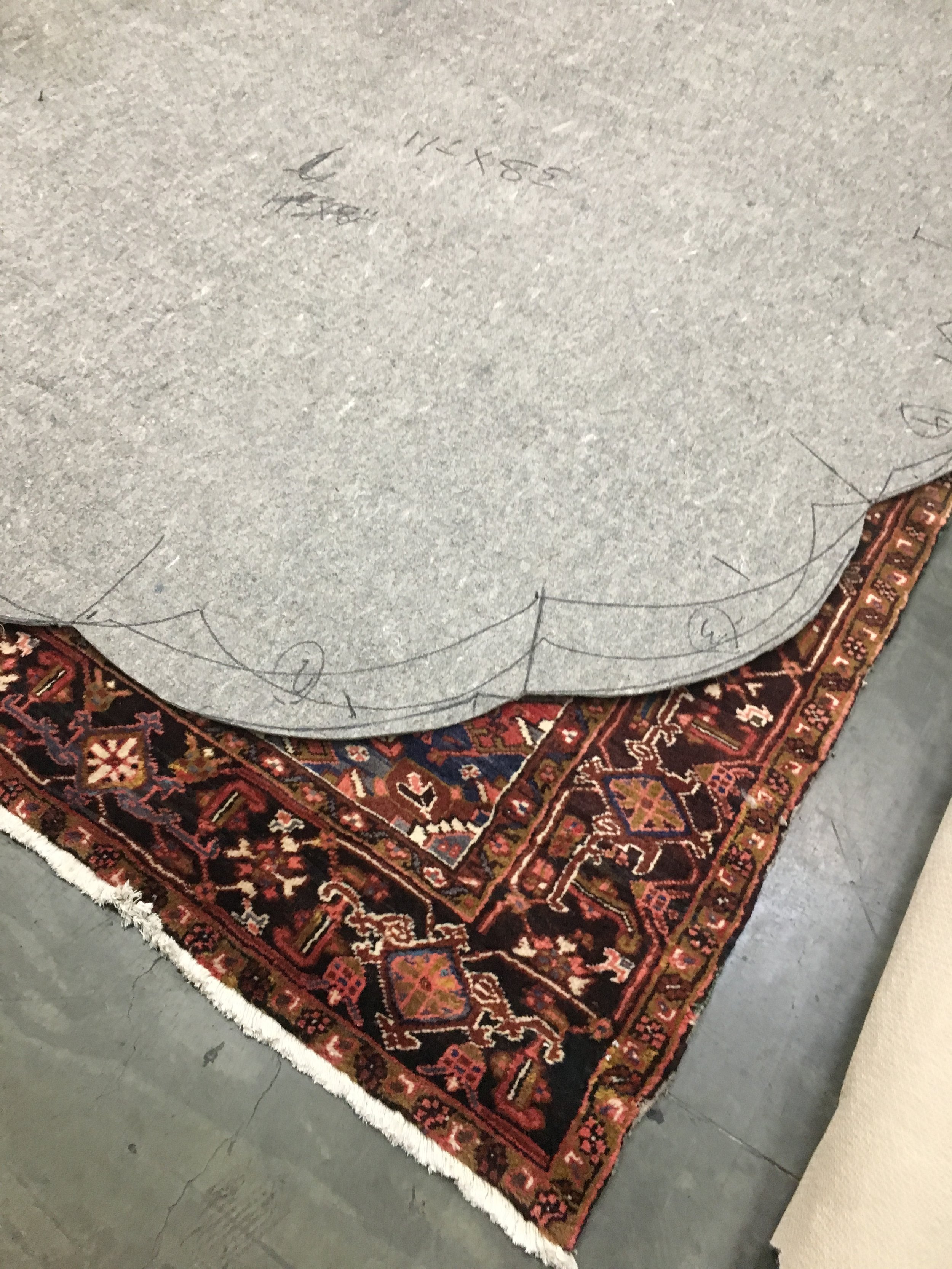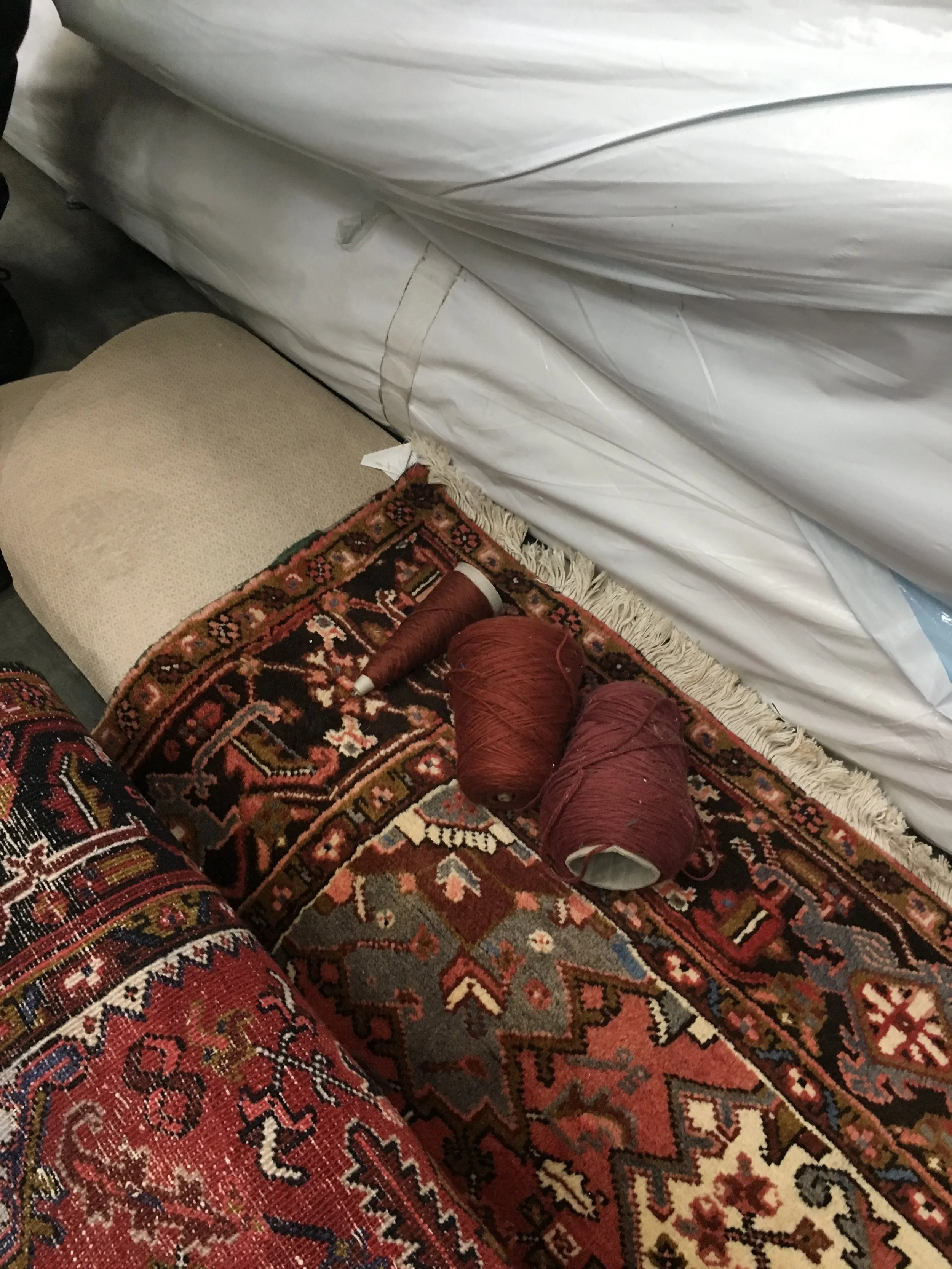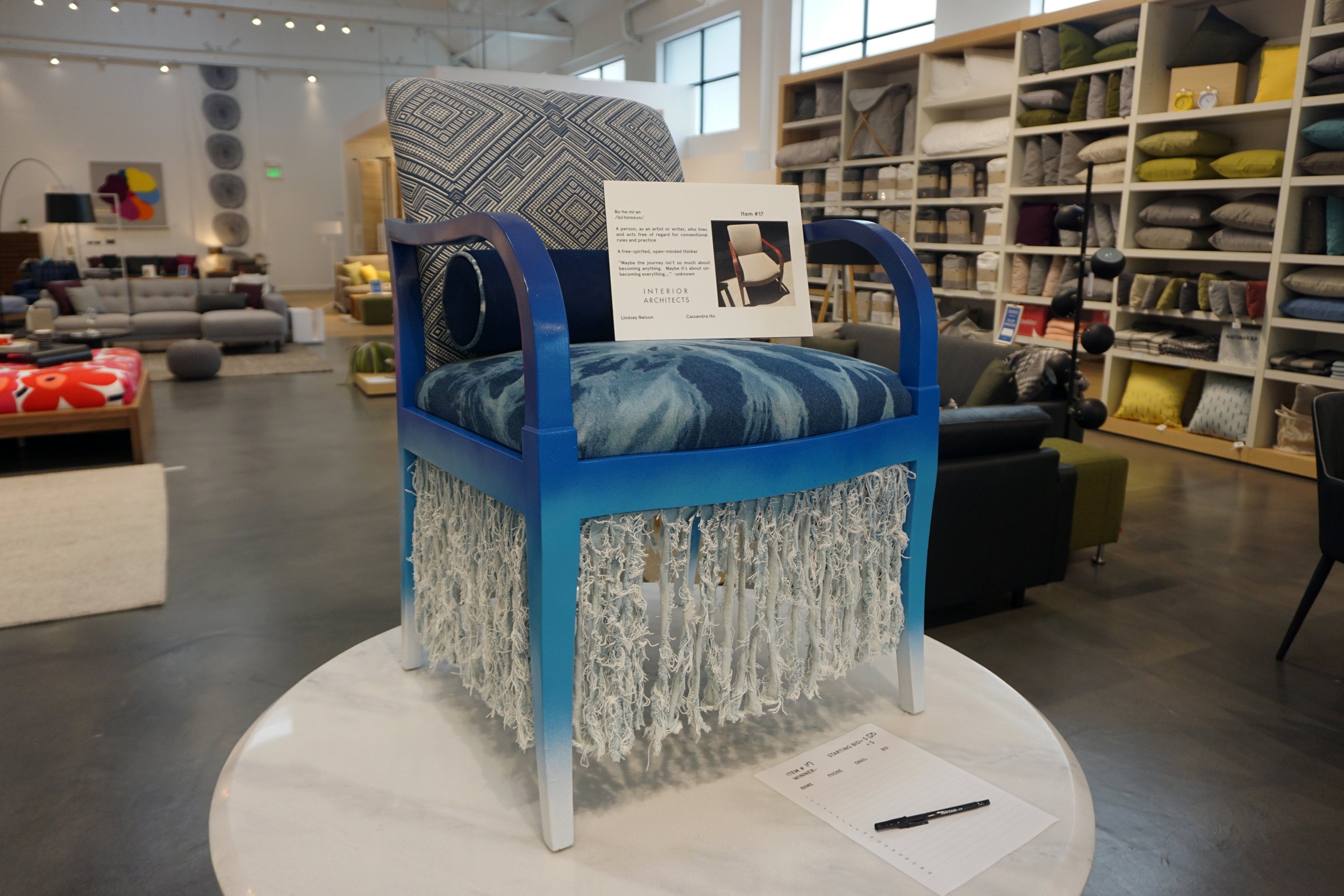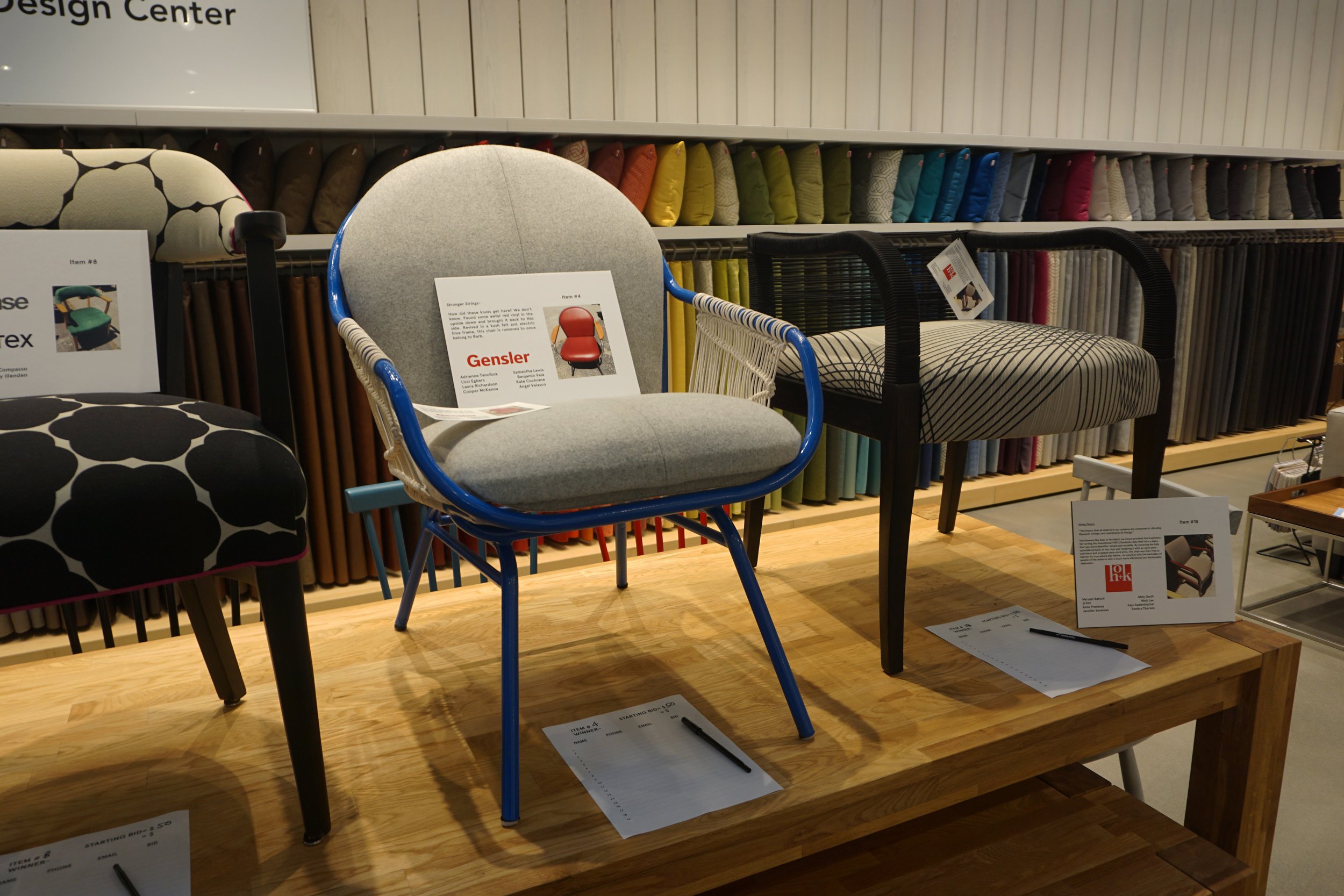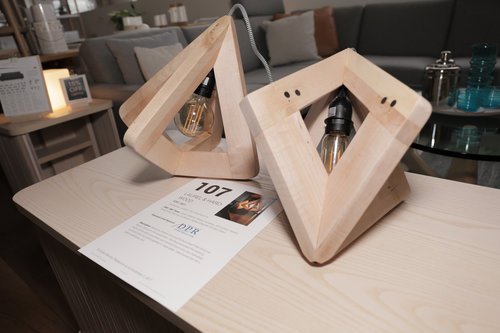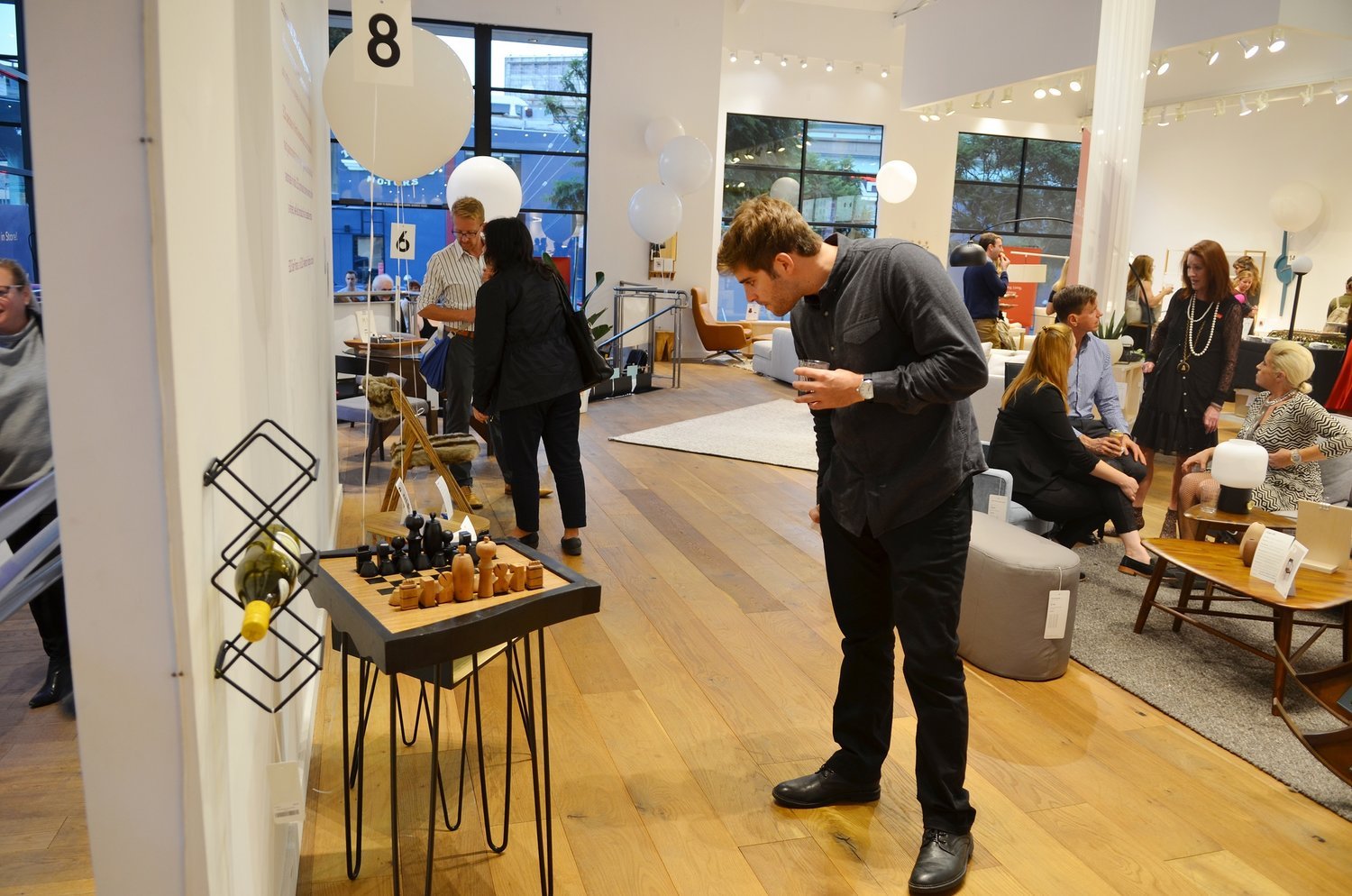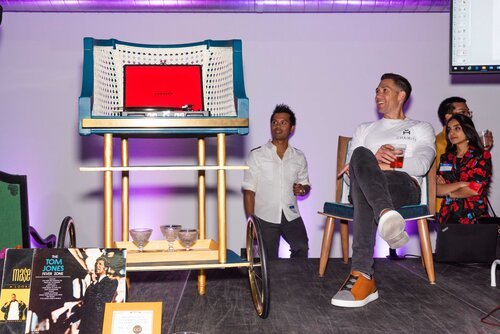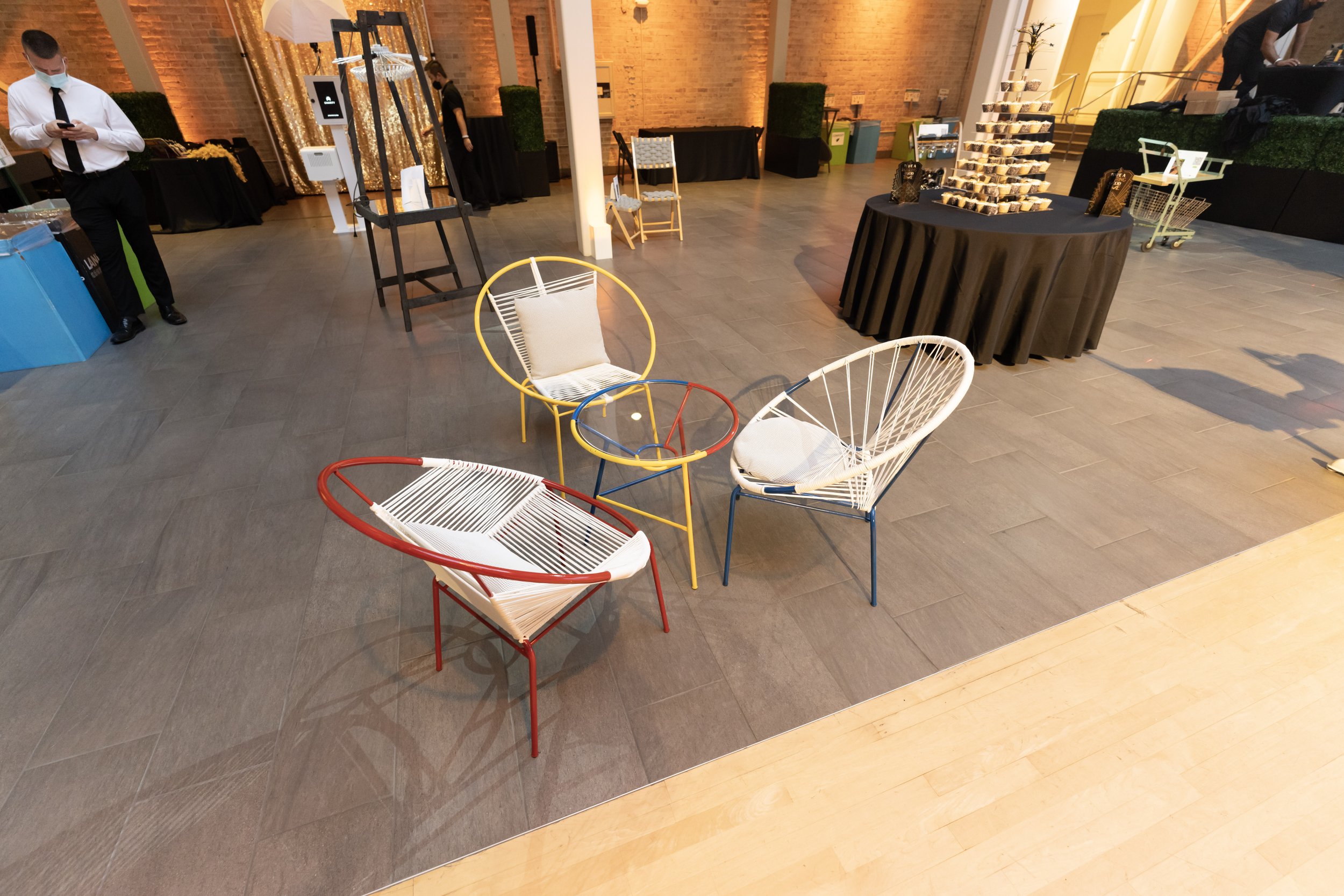Chairity 2022: A look at the Winning Entries
You came, you saw, you bell-bottomed, and twogether we raised some substantial dough for local Bay area charities.
To celebrate the A+D community and raise some funds for local initiatives, we came twogether for a night of Peace, Love, and Chairity. Our '60s theme inspired the grooviest outfits to accompany stunning entries by the best of the best in the Bay Area. We want to thank all who participated, donated, and supported Chairity both from near and far.
twogether we raised
$70,000
and counting!
Chairity is like fundraising for a 5k race, but instead of a race we’re building furniture. To participate, members of the A+D community team up to transform a “forgotten” piece of furniture into something new, while simultaneously raising money for charity.
This year we had 18 incredible teams take part, and with that came some show-stopping creations. While each team made a lasting impact, we’re excited to spotlight the four winning entries. Category winners were selected by four judges: Yana Ronin, Founder and Chief Strategist at FORTYSEVEN; Susan Lyons, President of Designtex; and Sherri Franklin, Founder and CEO of Muttville. We’re so thankful for your time and feedback.
transformation - Beetle by EHDD
Inspired by the event’s theme, we looked to design precedents from the ‘60s, ‘70s, and ‘80s, including the Solus Chair by Gae Aulenti, the Circle Armchair by Ini Archibong, and the Archive of Douglas Furniture of California.
Our main piece of “discarded” furniture was a retired dining chair. Like oh so many designers, we started with napkin sketches and weekly meetings. We set out to transform this chair into something fit for a more peaceful future. Our final design was an up-cycled meditation and wellness seat that we named Beetle.
Brought to life by the professional hand of Jordan Byrnes, our friend in fabrication, Beetle’s base was constructed by thoughtfully taking apart, bending, and reattaching the chair’s metal structure into a sturdy set of legs. We modernized the base with a fresh coat of minty green paint. The tabletop was constructed from found scraps of solid wood that were cut and sanded to fit perfectly on the U-shaped base, as if they had been taken from the same original piece.
As a piece of furniture, Beetle is an invitation to elevate the spirit and center the mind. A place to rest the tools that support connecting to a higher purpose.
– team EHDD
usefulness - BAR Catalog by Taylor Design
To kick off our 2022 Chairity work, we headed over to the Alameda Point Antiques Faire where an old library card catalog caught our eye. We knew that with a little TLC this forgotten piece could be useful again.
The event’s theme evoked strong visuals of a multifaceted decade that brought love and peace, activism, civil rights, and bold statements in fashion, furniture, and interior design. To capture this inspiration visually, we started by creating a composition of images that reflected all things ‘60s. We were particularly drawn to the period’s fearless use of “non-traditional” colors in furniture. Hello olive green!
With our aesthetic inspiration set, we began to brainstorm how this piece could be both useful again and aesthetically pleasing. Serendipitously we discovered that a standard wine bottle fits perfectly into one individual library card drawer. It was settled, our Chairity entry would be a chique ‘60s-inspired combination bar and wine cabinet.
To bring the final piece to life, we replaced the old wood top, removed the card holders within each drawer, cleaned the drawer hardware, sanded the exterior, and attached vintage-looking legs to the base. Finally, the exterior got a fresh coat of Rookwood Dark Green paint. To create a warm contrast with the green exterior, we maintained the piece’s original wood grain on the interior of the drawers.
We know this handsome bar cabinet will make a lovely addition to anyone’s home.
– team Taylor Design
novelty - FIKA NIWA by Pair
Our journey began at Urban Ore, a huge East Bay thrift store chock full of weird antiques and furniture. We selected two pieces that were literally grooved and just a bit odd, a handmade stand and a white lighting fixture.
The stand’s half round molding felt a bit Japanese and a bit Scandi all at the same time. So, we focused on the Japanese concept of an indoor(ish) garden, tsubo-niwa, and the Swedish concept of fika, a time to take a break from the days’ activities. We set out to create a space where you can take a break and tend to your indoor garden.
First, we took apart the stand piece by piece, meticulously sanding each element to remove its old finish. We then placed each rung back in one by one, spacing them out to create a bit more lightness. To modernize the overall look, we chiseled out a beveled edge along the piece’s two platforms. To ensure the surfaces were watertight, we opted for a sleek white pour-over epoxy.
Our final addition to the newly epoxied table was a hoop-and-pole trellis for winding vines. Riffing off the base’s circular forms we incorporated two round poles and a circular hoop to give a bit more height to the piece while also supporting larger vine plants.
We utilized our second piece—a white ceramic lamp—as the base for bendable led lights. Practical and groovy, these led lights can be turned on with a remote control and set with a timer. For calm nights at home, flip on a soft yellow light. For fun funky parties, you can select from a range of bright, groovy colors.
– team Pair
groovy - Inner Peace by RLB + BAR
While on the lookout for the base element for our Chairity entry, an antique foot stove caught our eye in a vintage shop in Sonoma. In the early 18th-century foot stoves were used in poorly heated spaces to keep feet warm during the cold winter months. We decided to transform it into a lamp to create a connection between its use 200 years ago and today. Instead of a warm temperature, it would now radiate a warm light.
As we studied our foot stove closer, we noticed peace signs within the punched-out designs. To bring out the ‘hidden’ peace signs, we adhered small acrylic plates over specific parts of the design. Next, we set out to create a base that was visually cohesive and did not distract from the antique patina of the tin box. Napa-based Vonsaal Design Build donated a bit of beautiful, durable old-growth redwood that was initially the building material for a dairy barn in Petaluma.
The wooden base was built in a small, private wood shop in Napa Valley, owned by a carpenter who helped build a private home designed by Howard Backen, one of the founders of BAR. To make space for the light fixture we cut a hole into the bottom of the tin box to insert it and affixed it with matching screws.
We took design cues from the mid-century modern era with a particular emphasis on a simple, timeless aesthetic. The uneven patina of the metal paired with the intricate old-growth wood grain gives the piece an organic feel and underlines its immanent tranquility. In daylight, Inner Peace is subtle, with warm earth tones. At night, it projects warm glowing peace signs onto adjacent surfaces, inviting you to slow down and reflect.
– team RLB + BAR
This year’s Causes
We are proud to give back to incredible nonprofits while connecting the design community through creativity, design, and collaboration.
Hamilton Families’ mission is to end family homelessness in the San Francisco Bay Area. Our pioneering homelessness prevention and housing subsidy programs are nationally recognized. In addition, we provide shelter and stability and support the well-being of children experiencing homelessness.
Muttville reaches out to senior and special needs rescue dogs; finds homes for those dogs that are adoptable, and offers end-of-life care for those that are not. No dog should spend its last days in a shelter. There is so much love and joy in these dogs!
Friends of the Urban Forest’s mission is to make neighborhoods thrive by connecting residents with nature and each other. Urban Greening fights climate change, improves air quality, controls stormwater runoff, reduces noise pollution, adds beauty, and boosts happiness.
Project Color Corps believes color is a change agent that infuses a sense of joy and equity into our surroundings. By transforming environments through “optical optimism,” Project Color Corps brings beauty and possibility to students, schools, and communities in underserved neighborhoods around the country.
Until next year!
Thanks again to all who participated, celebrated, and raised money with us.
To stay up to date with all things Chairity and two sign up for our monthly newsletter here.







